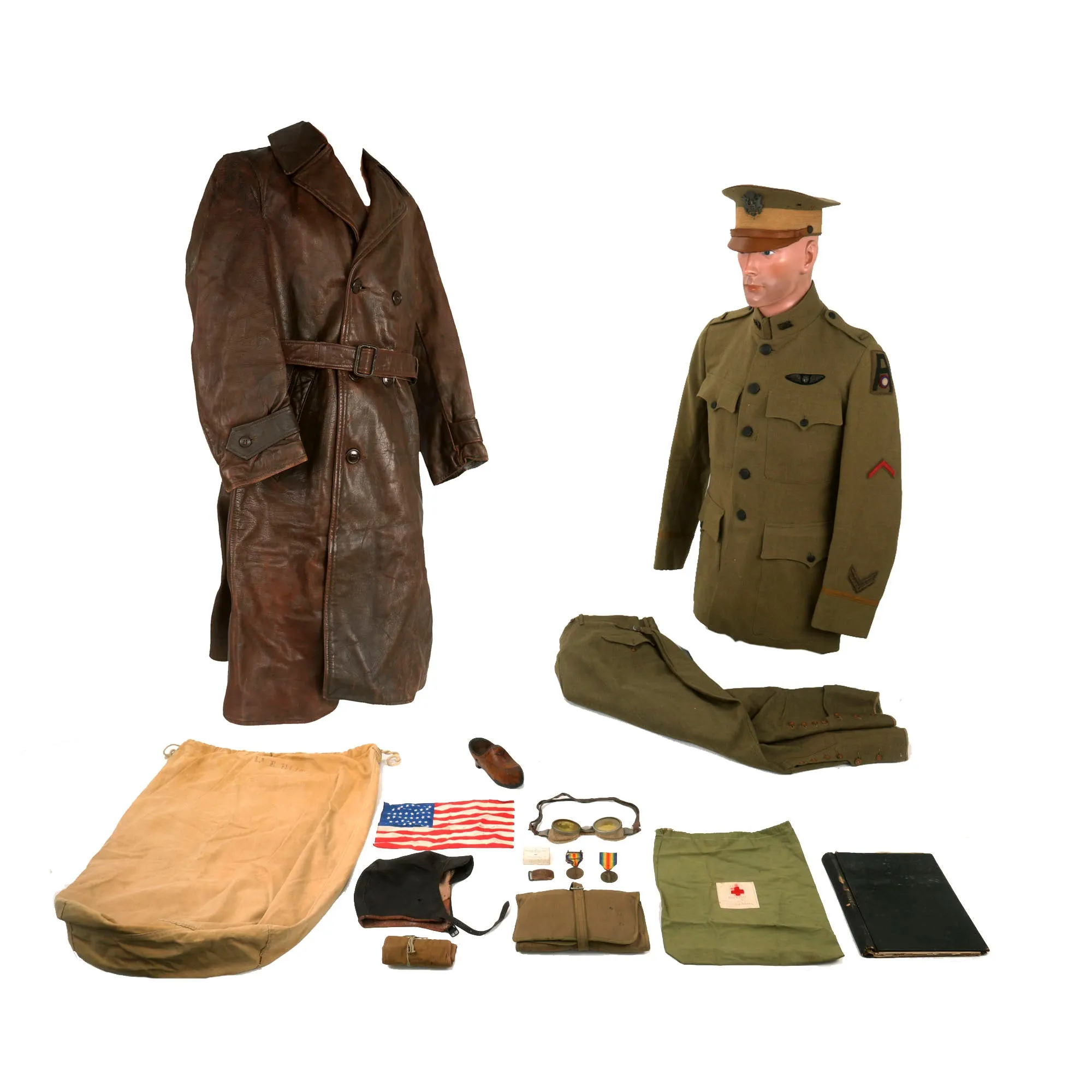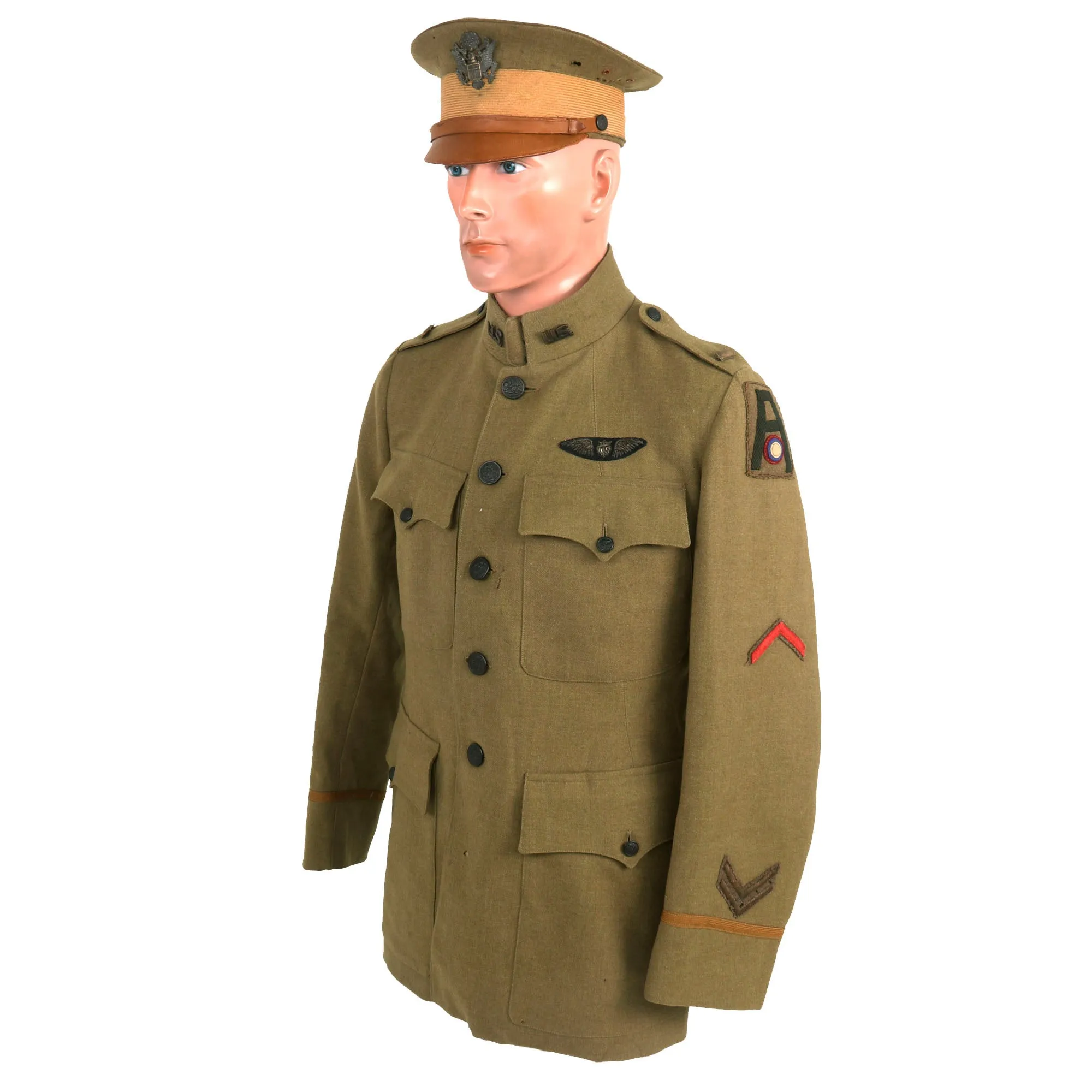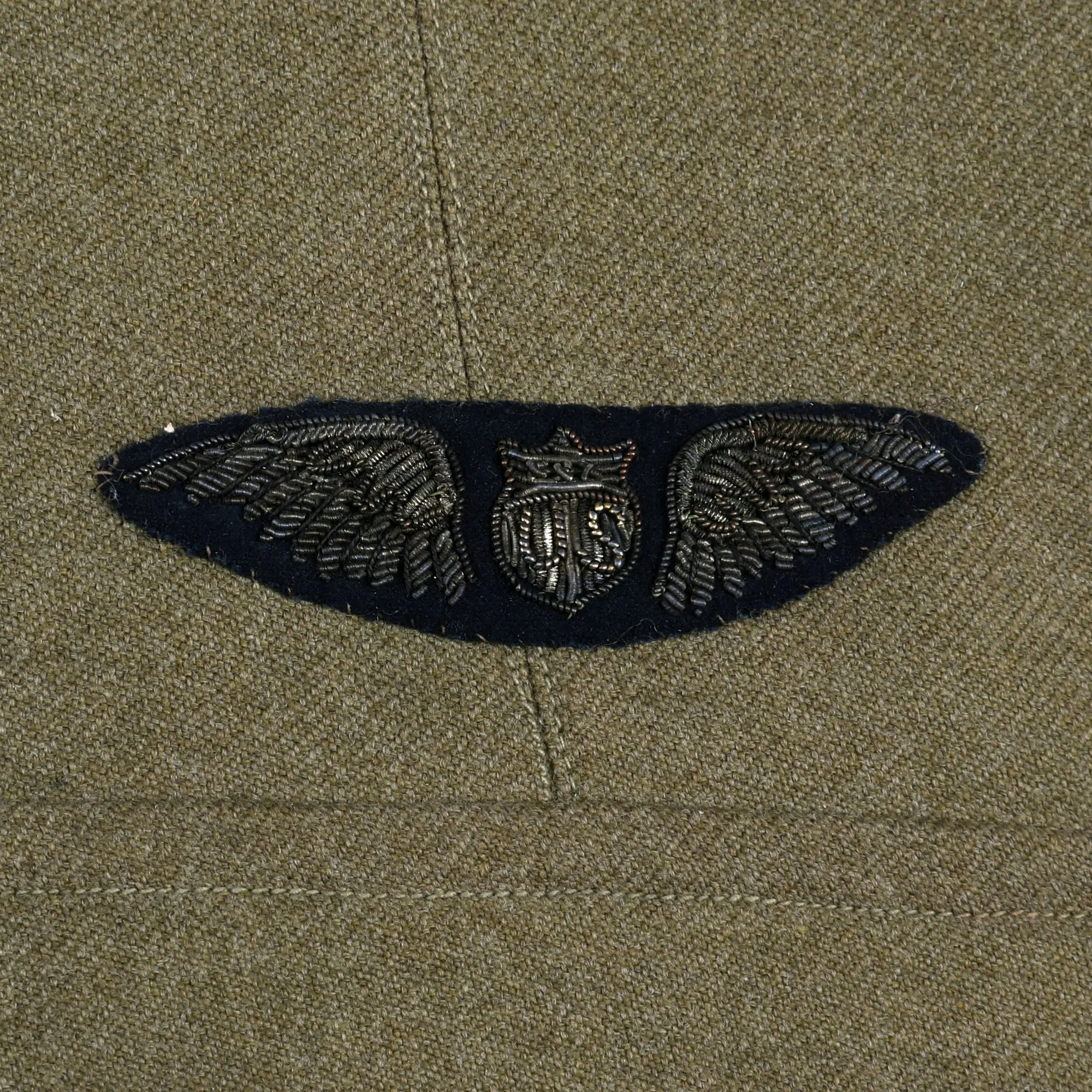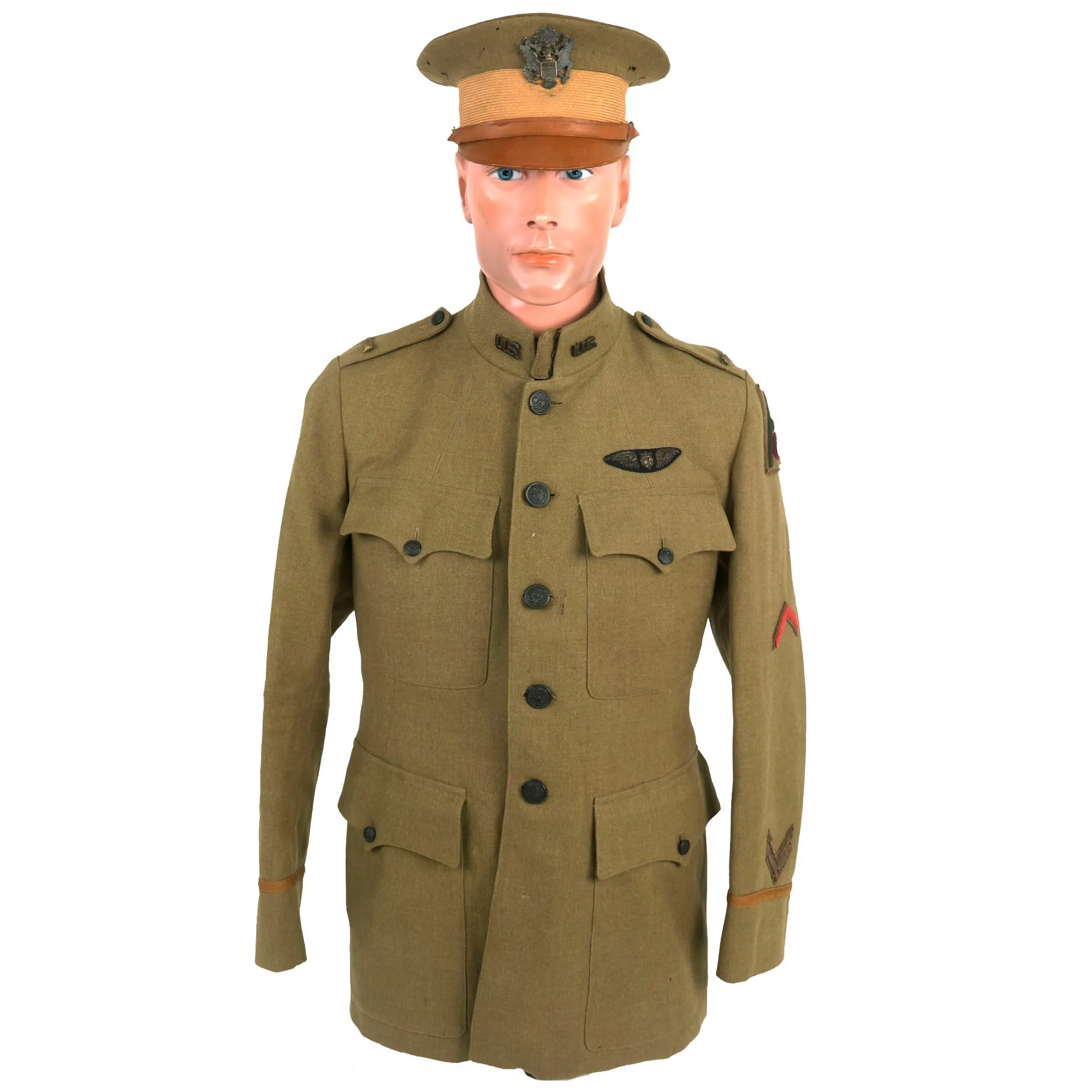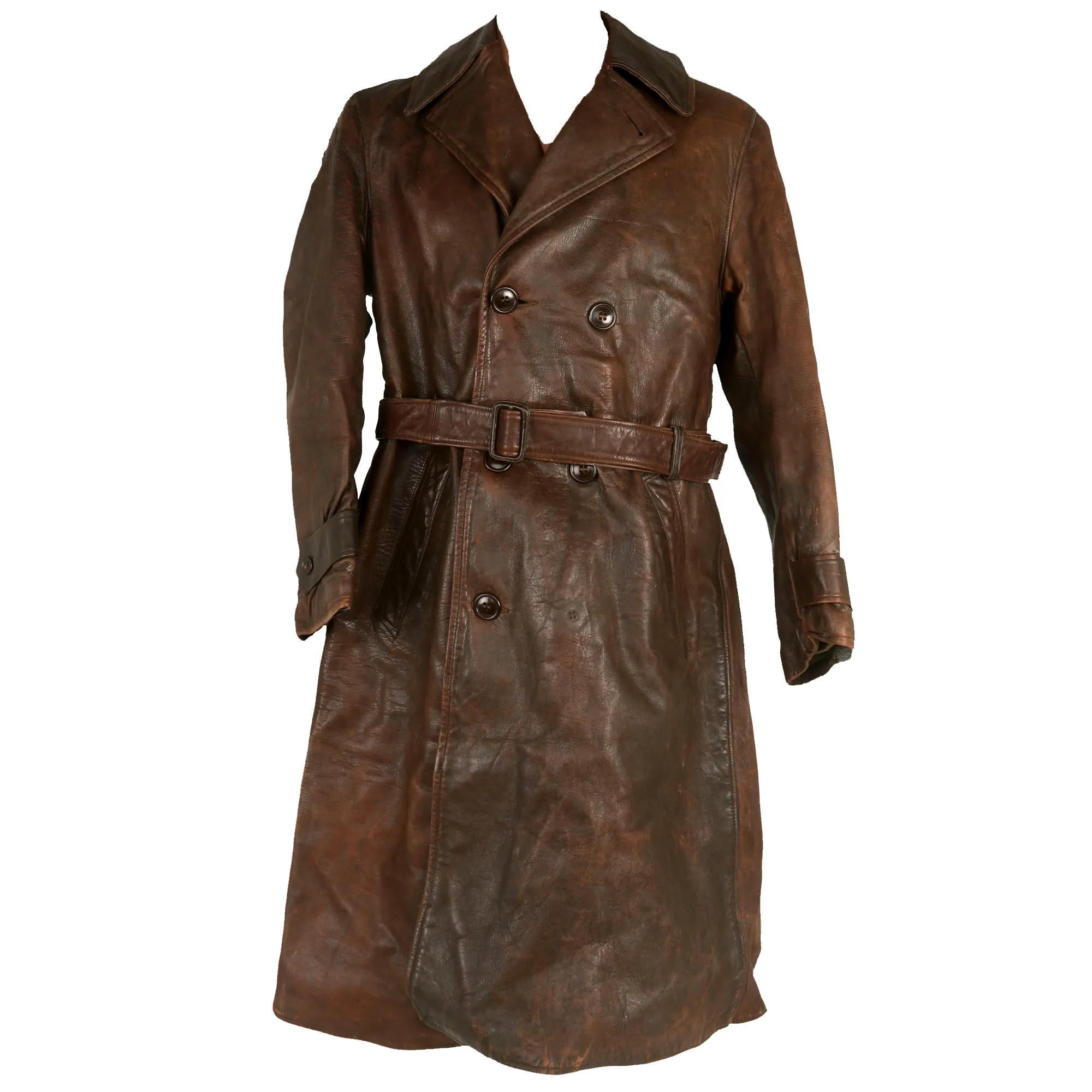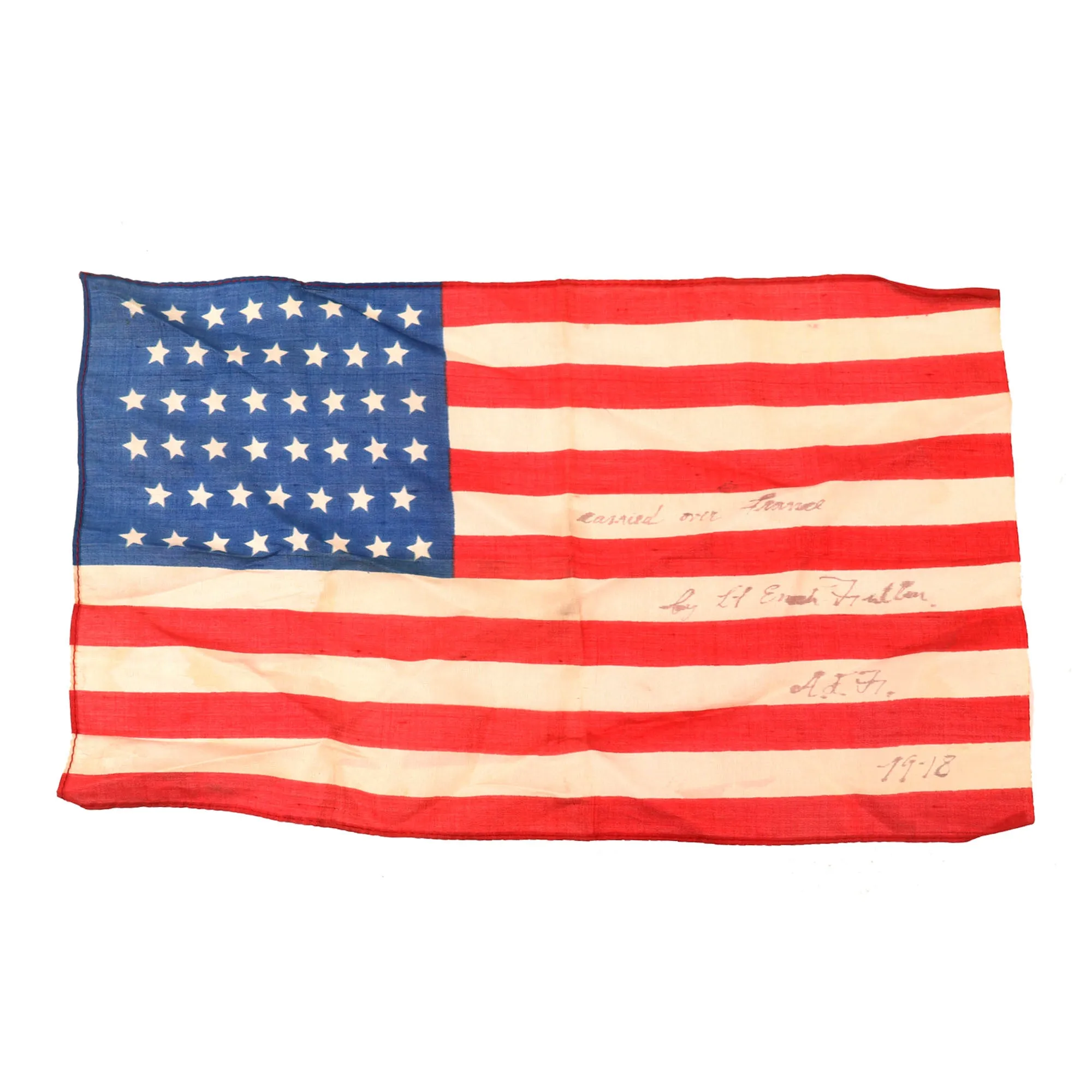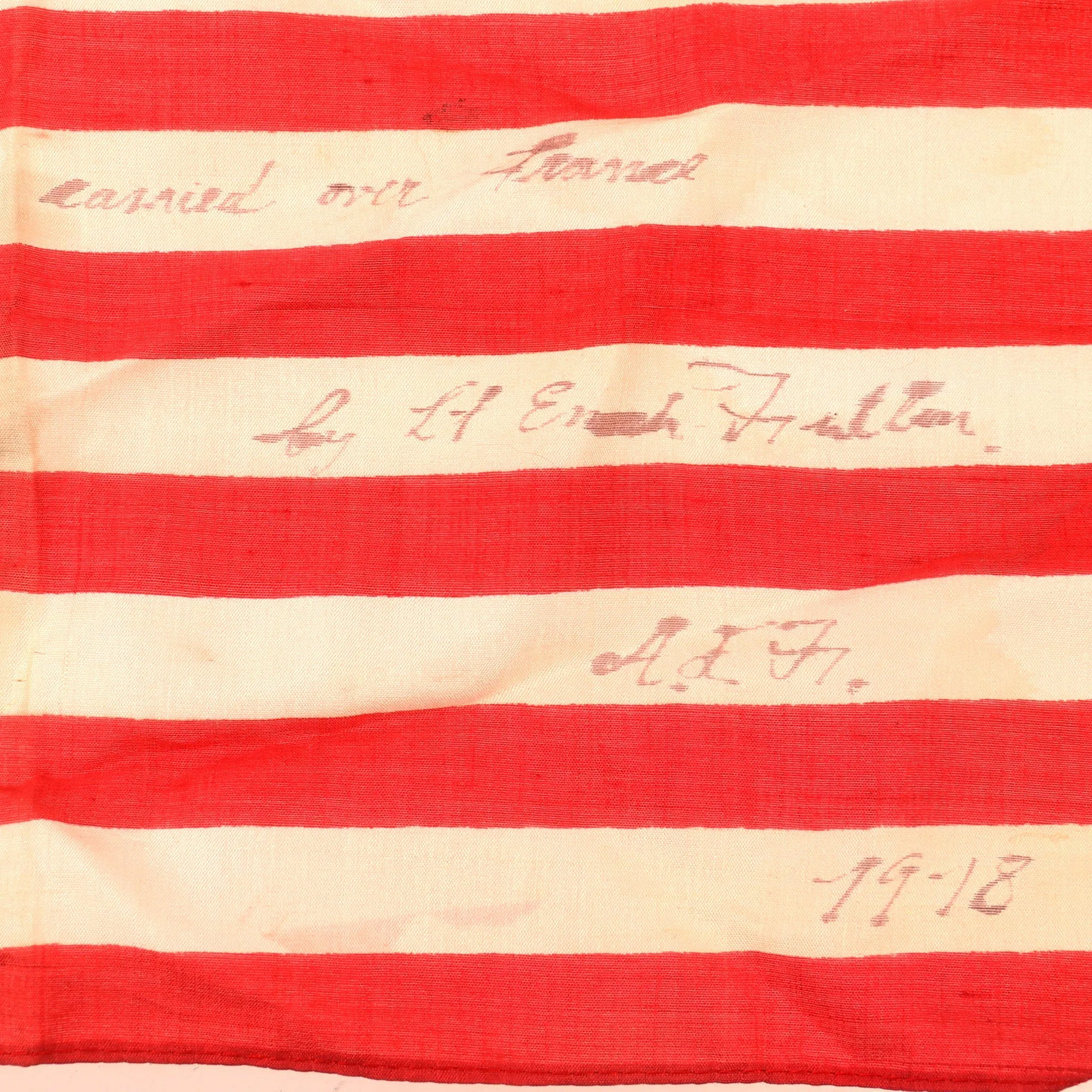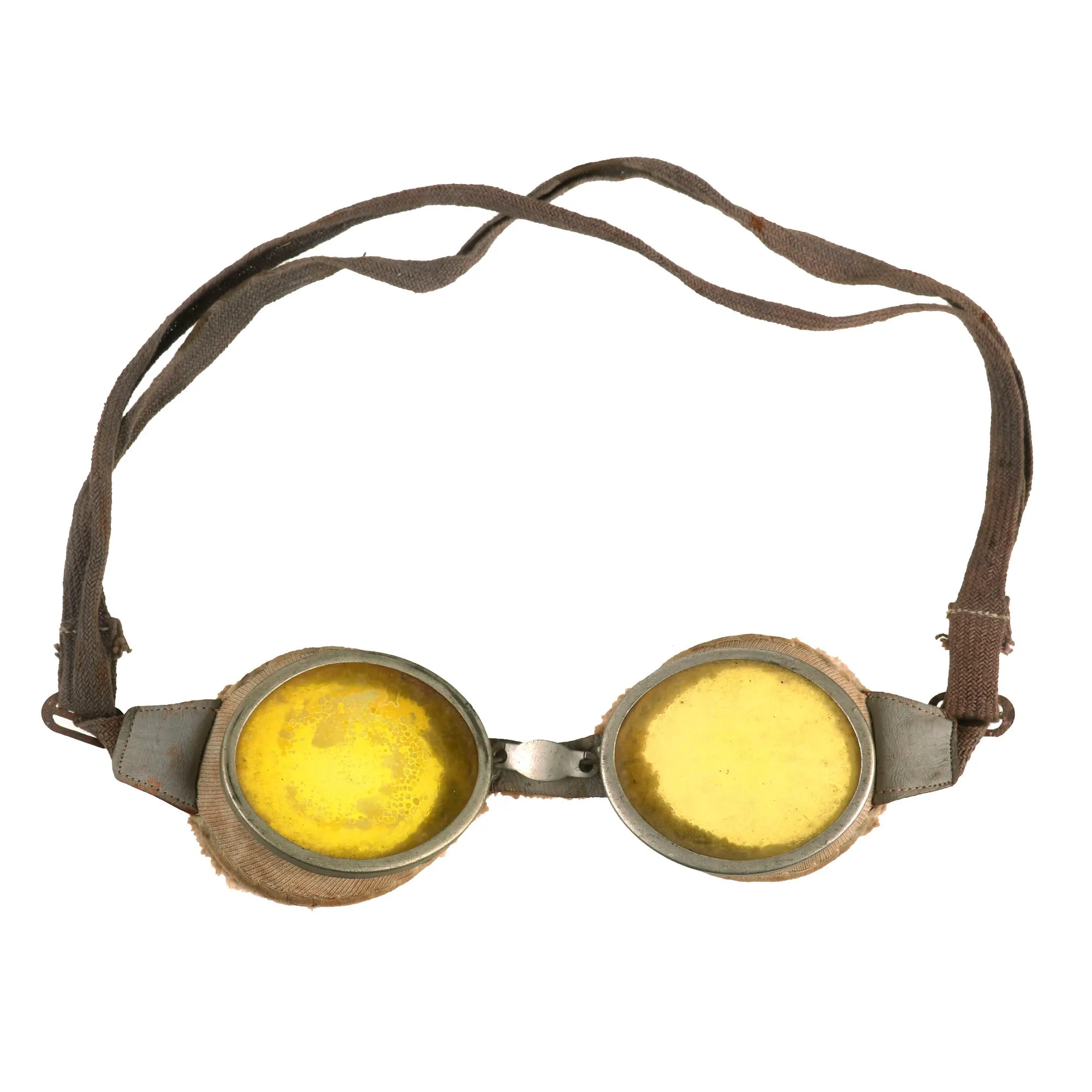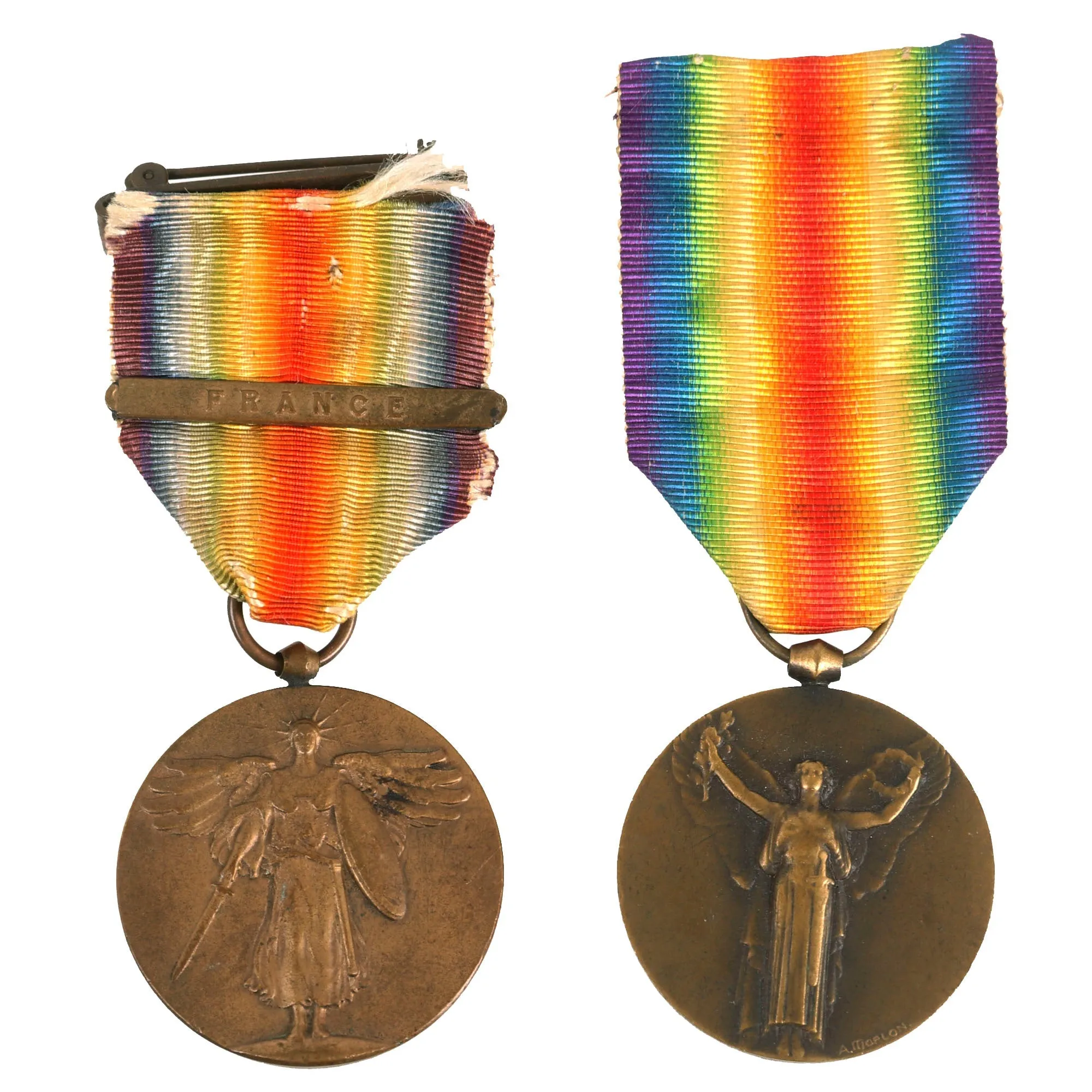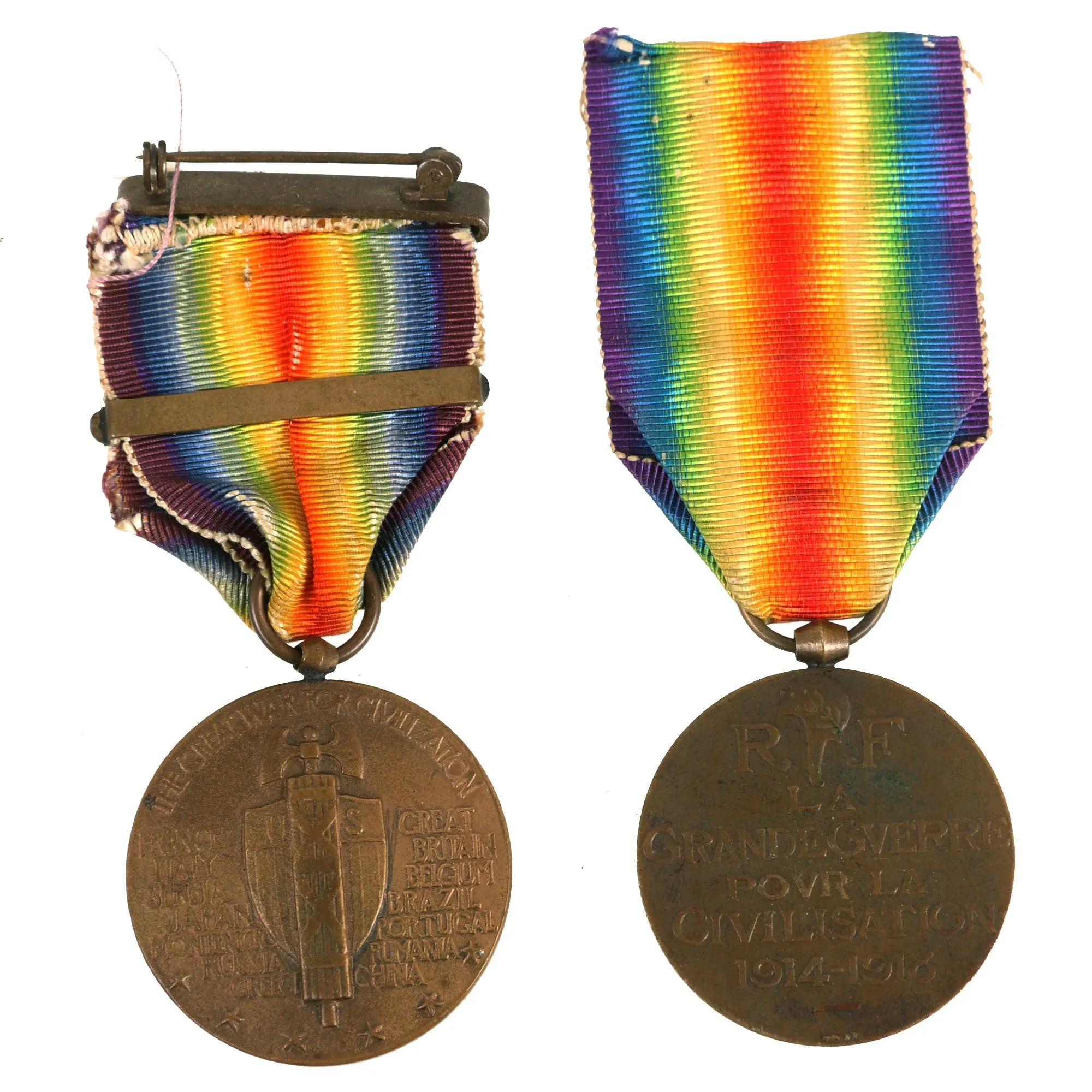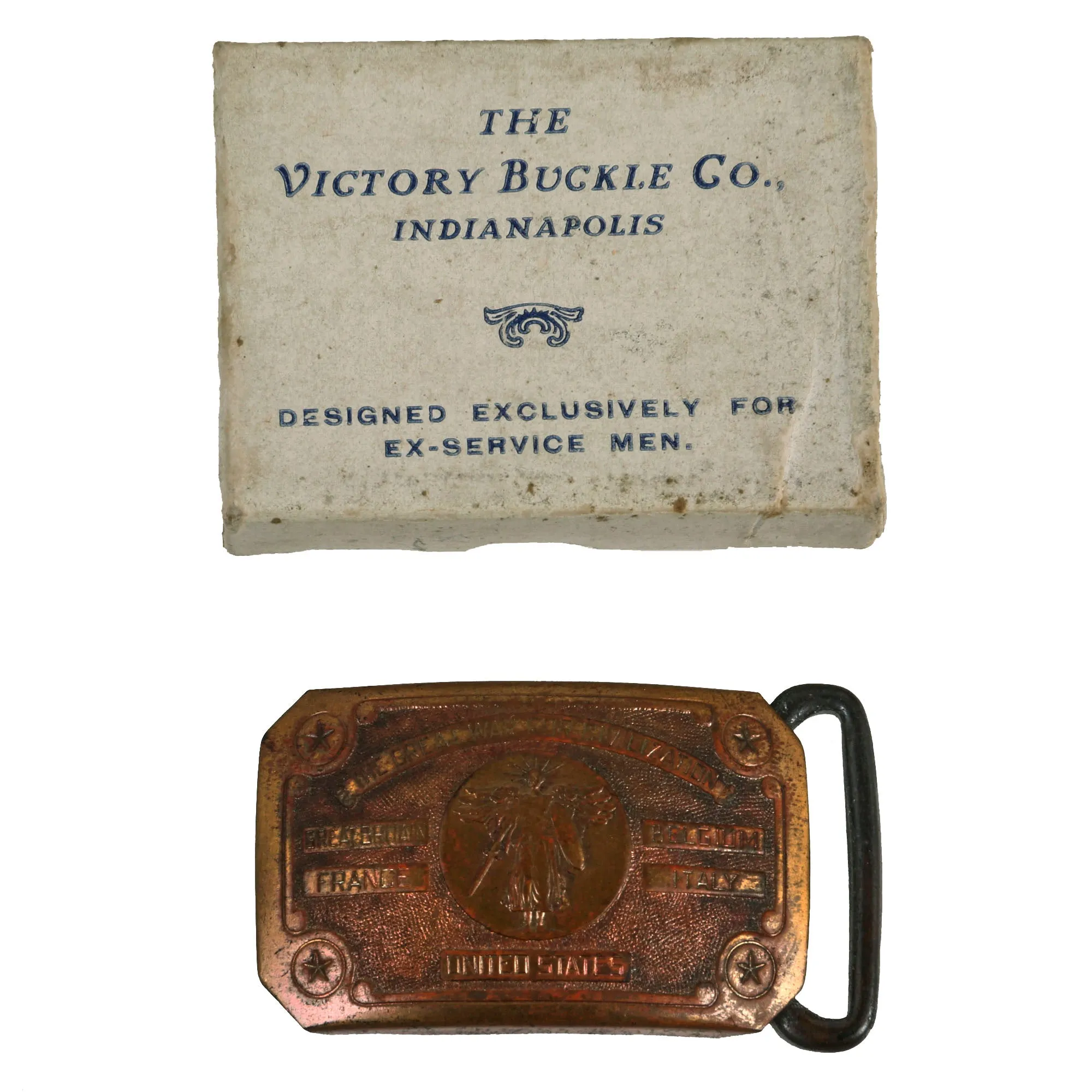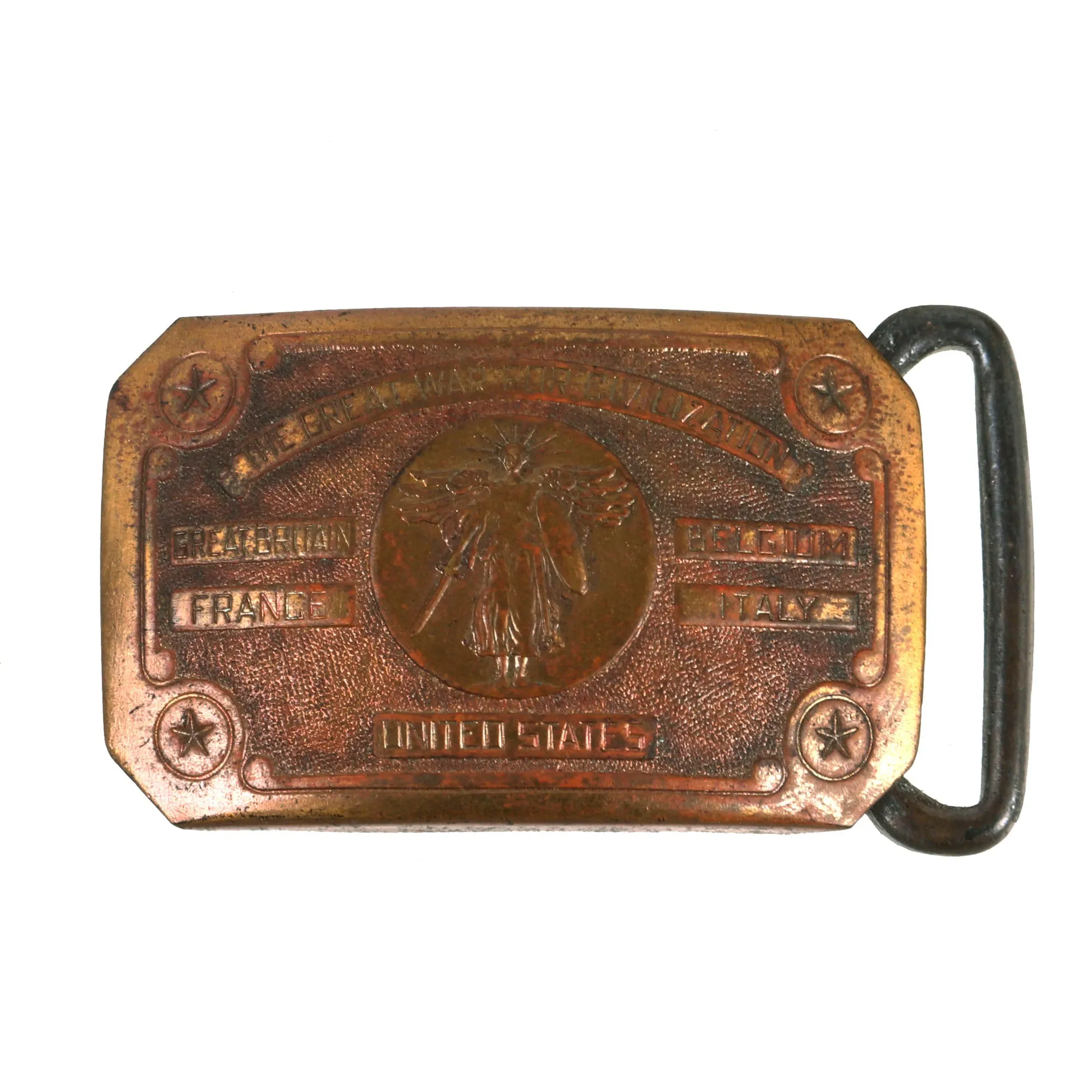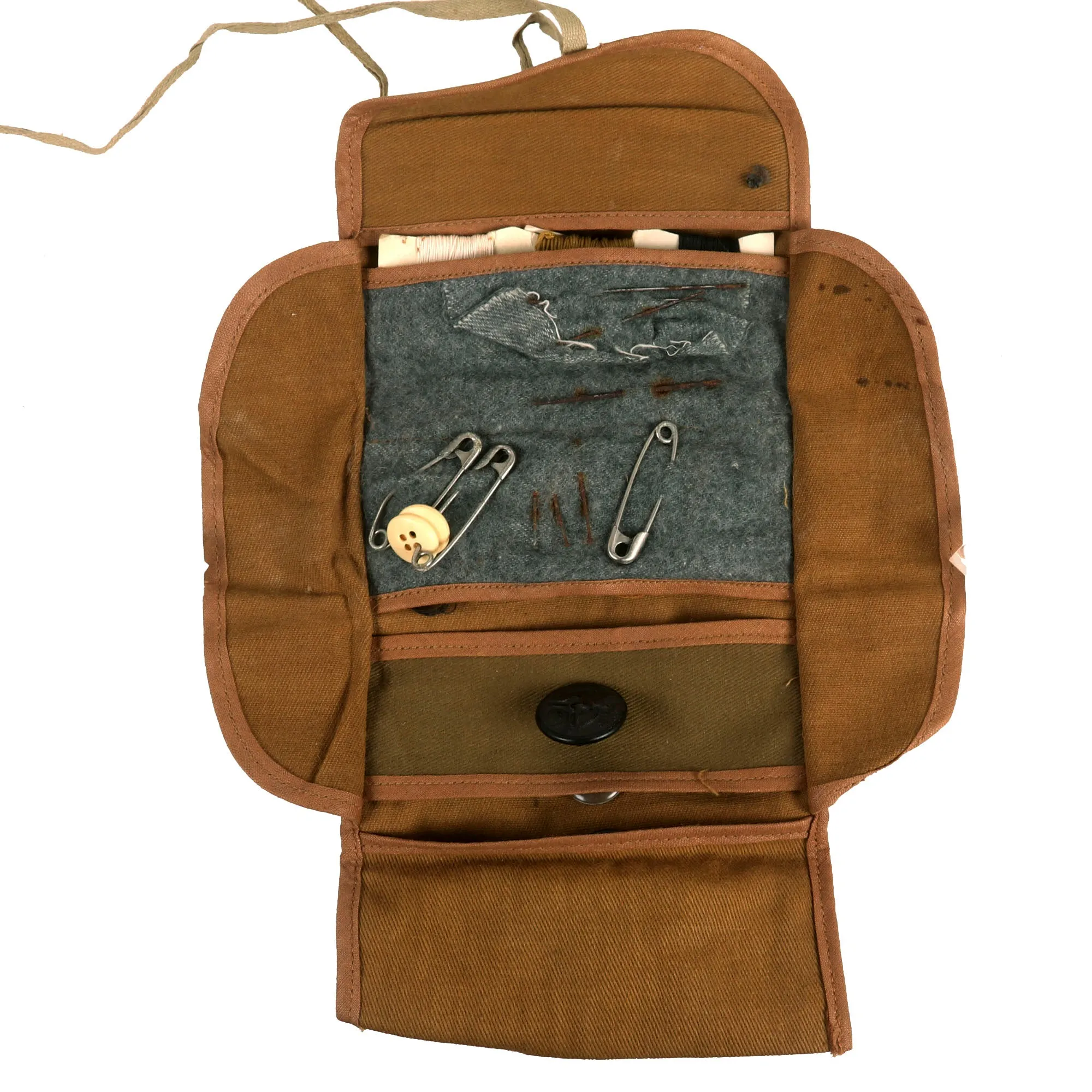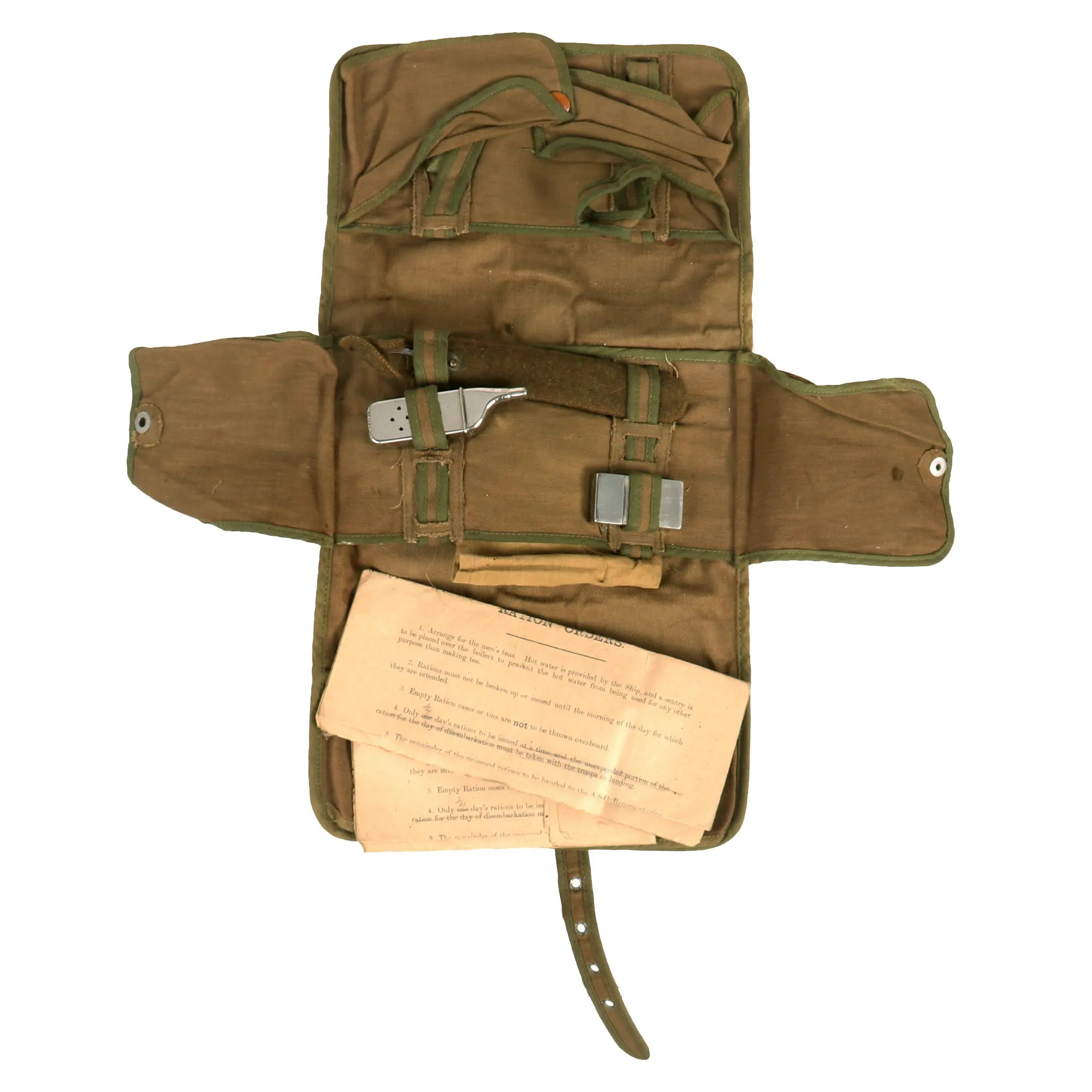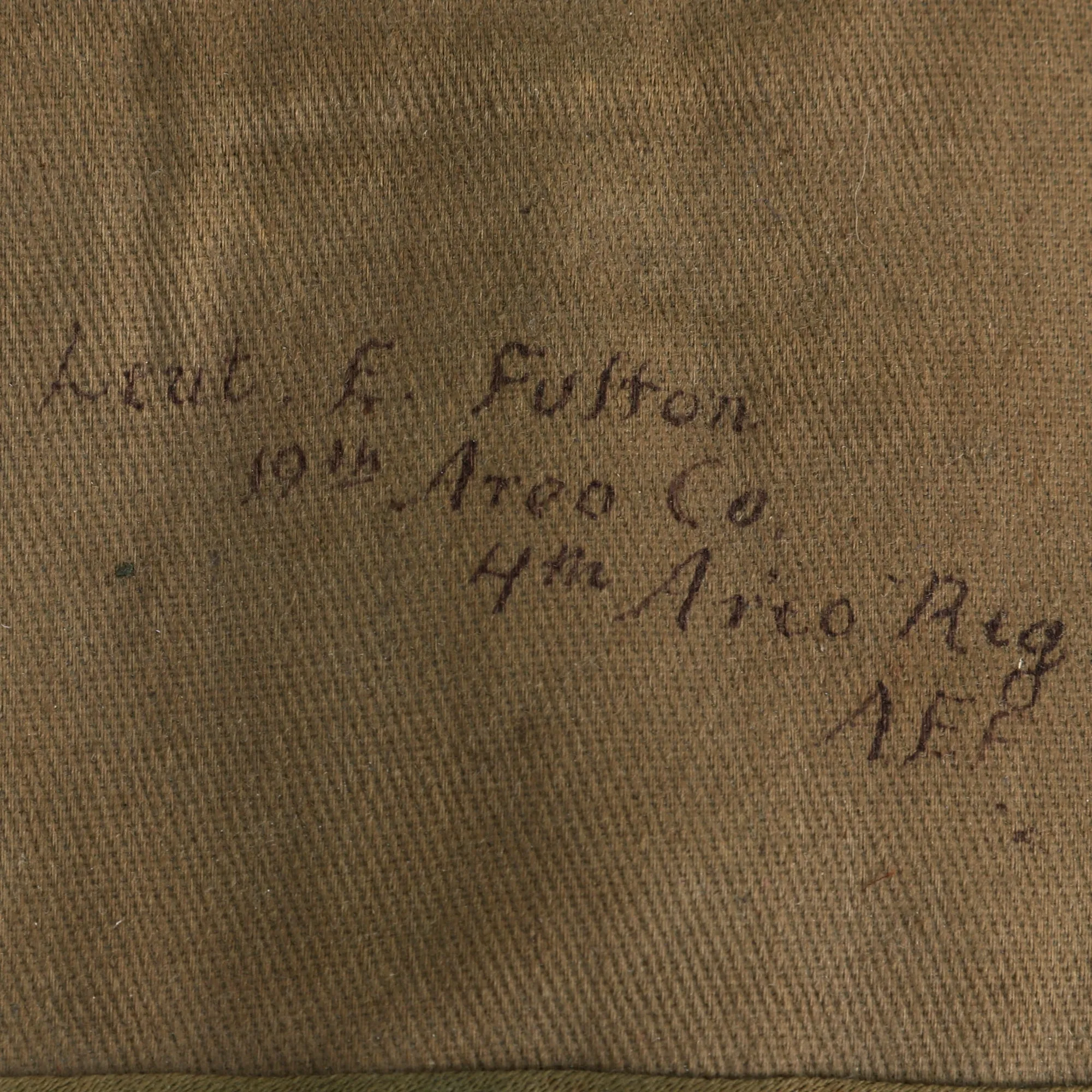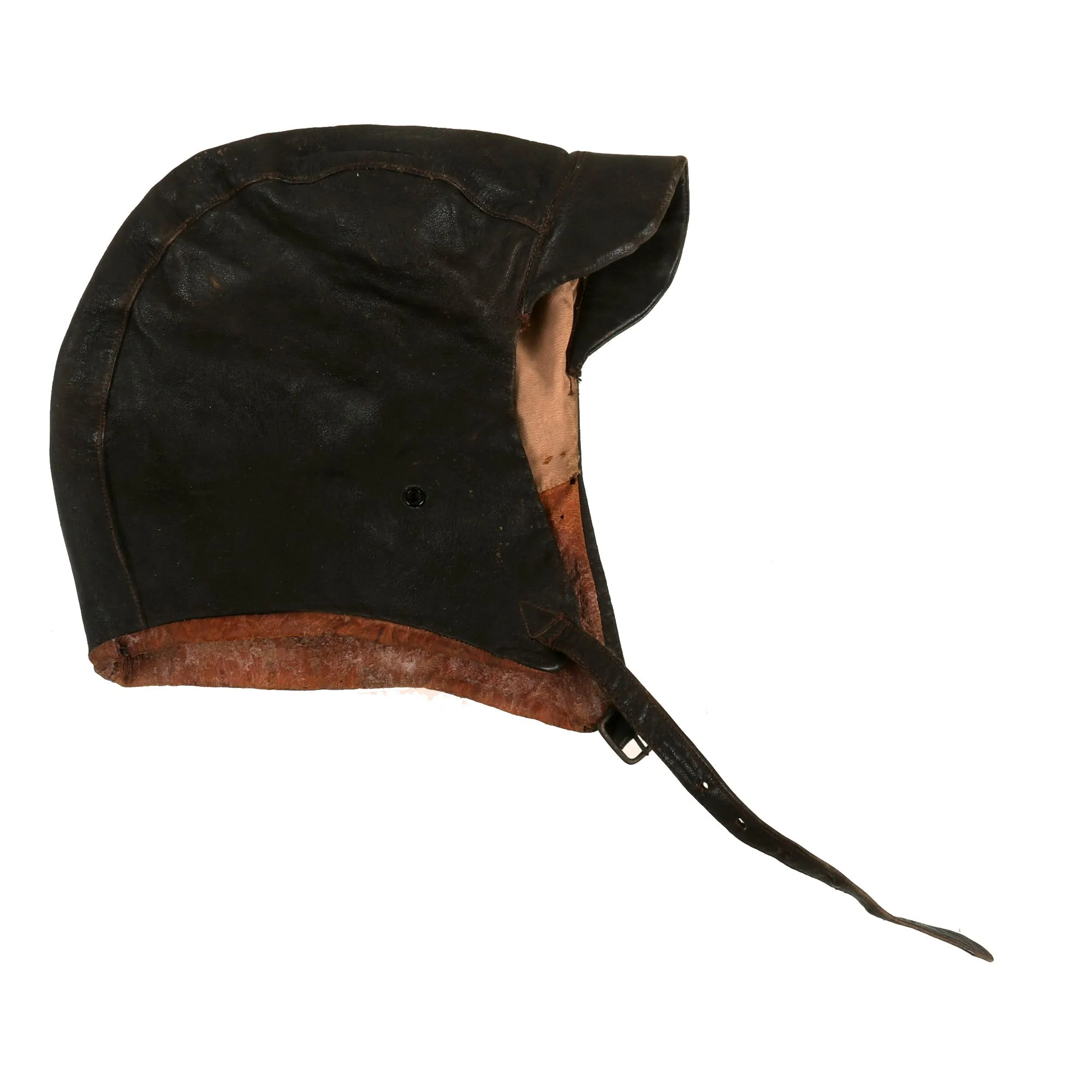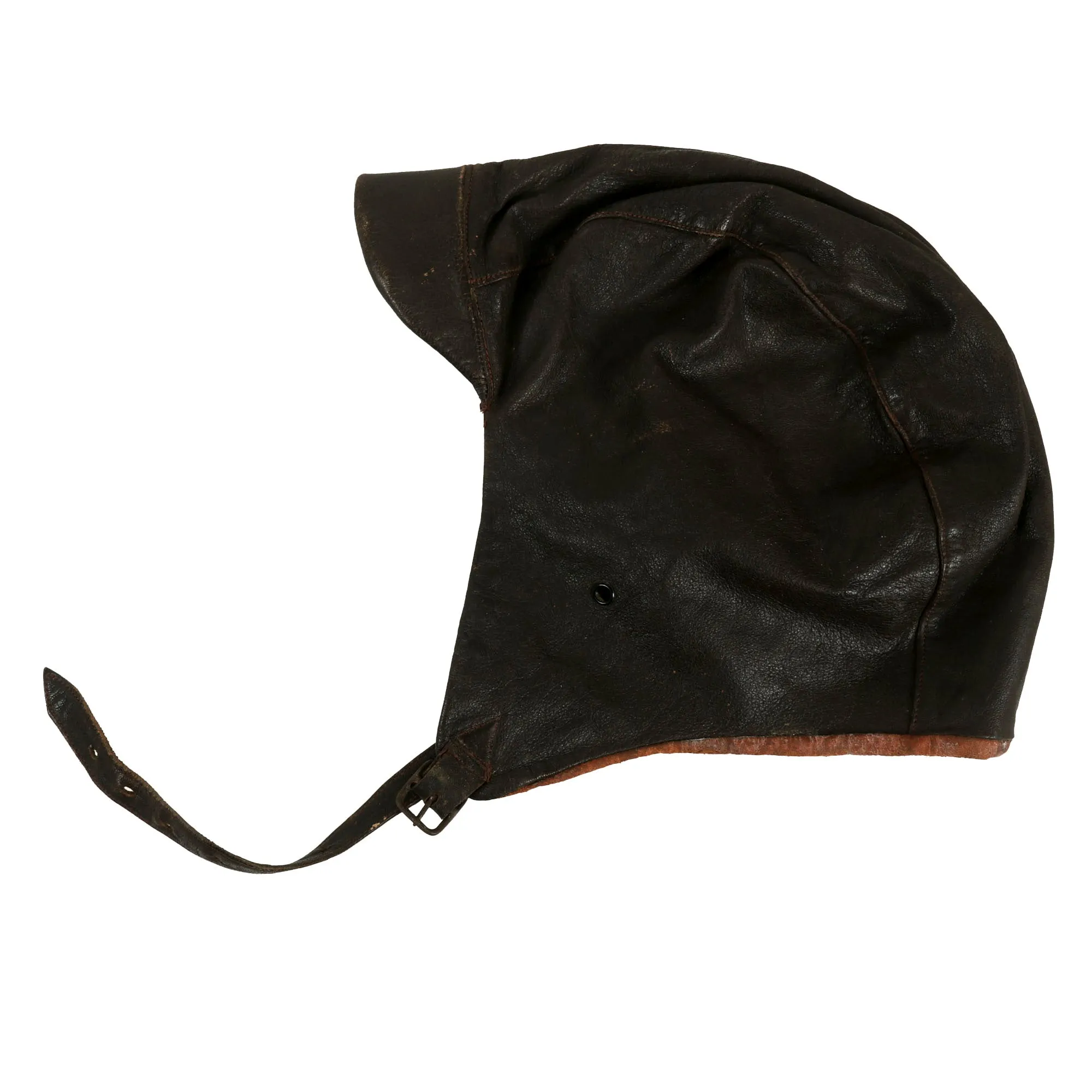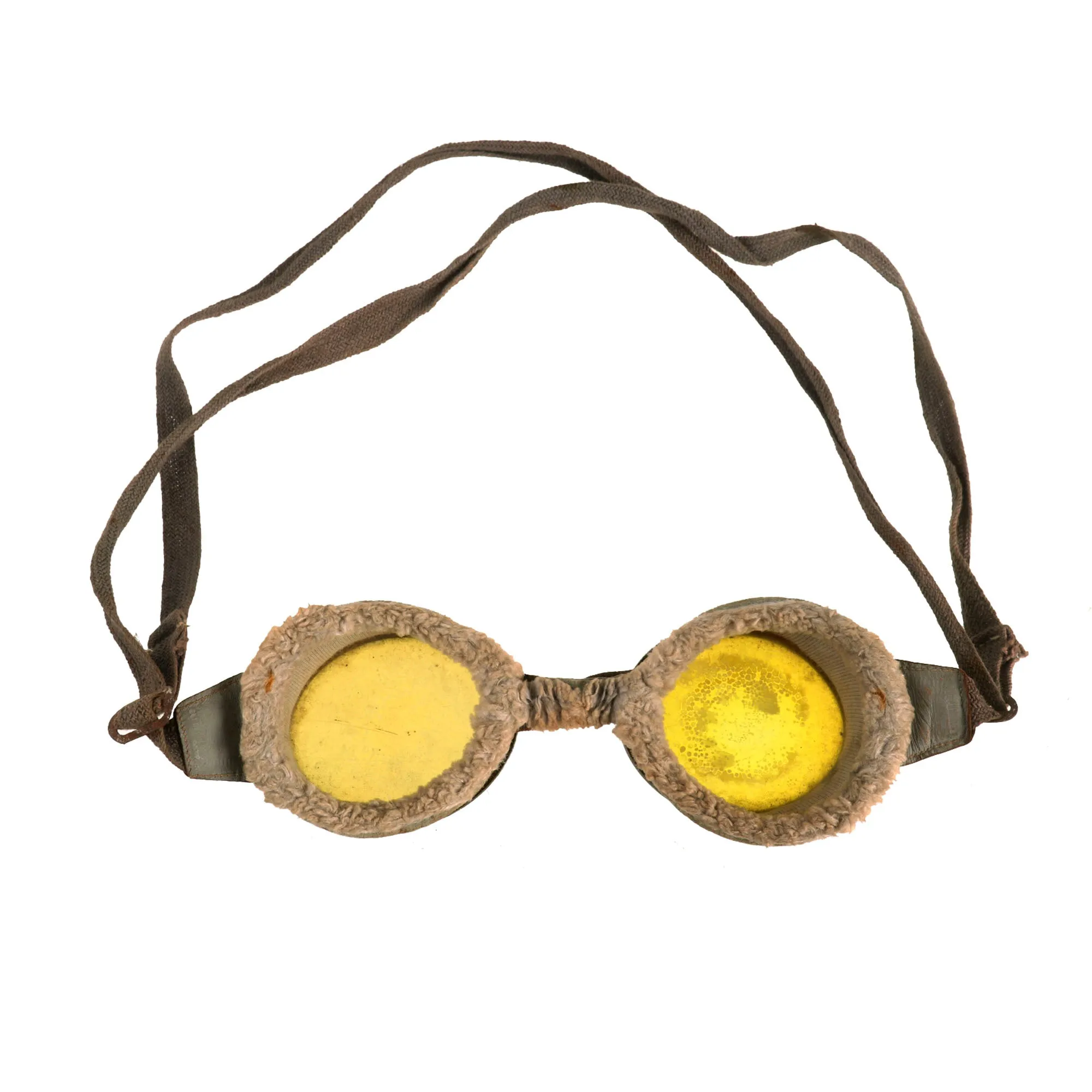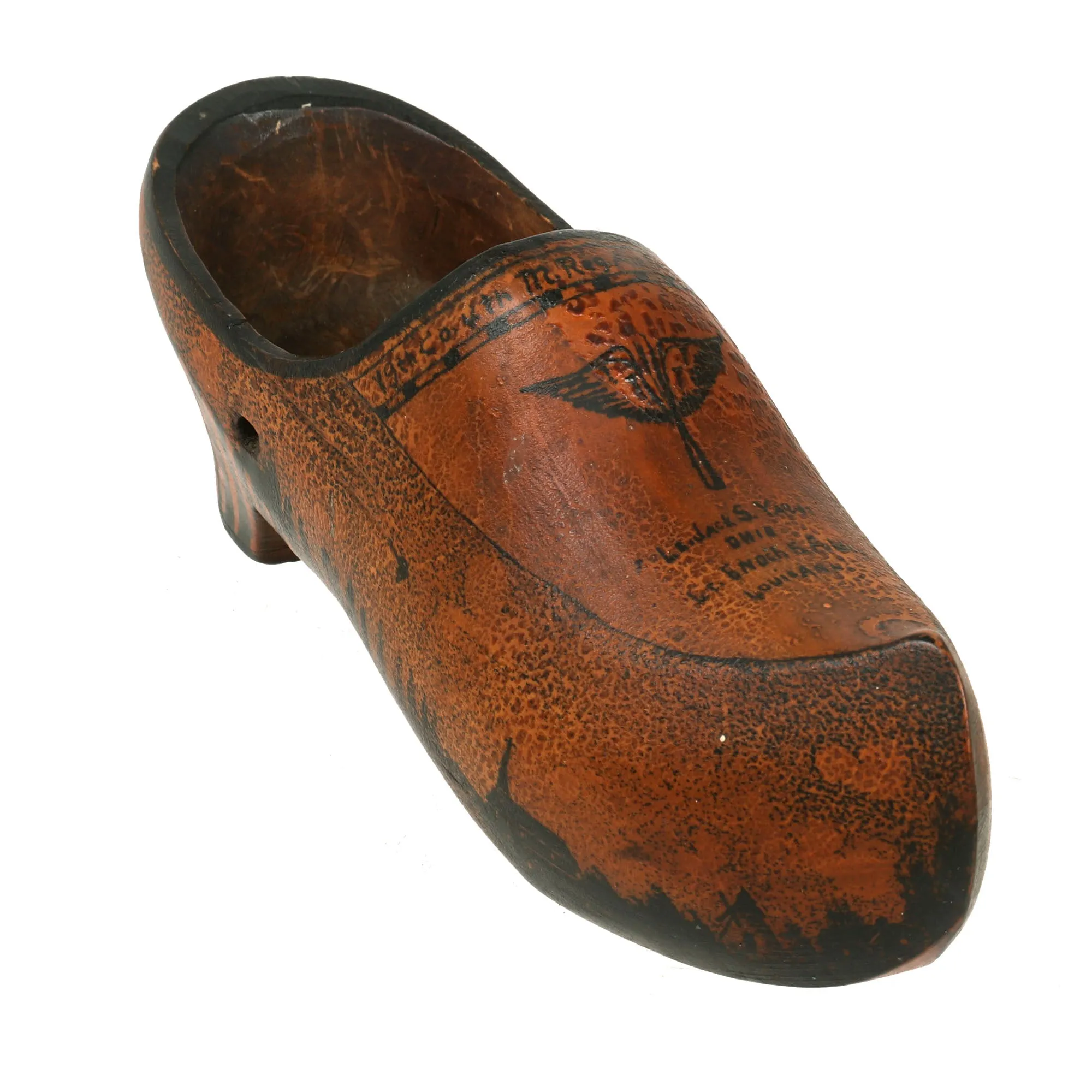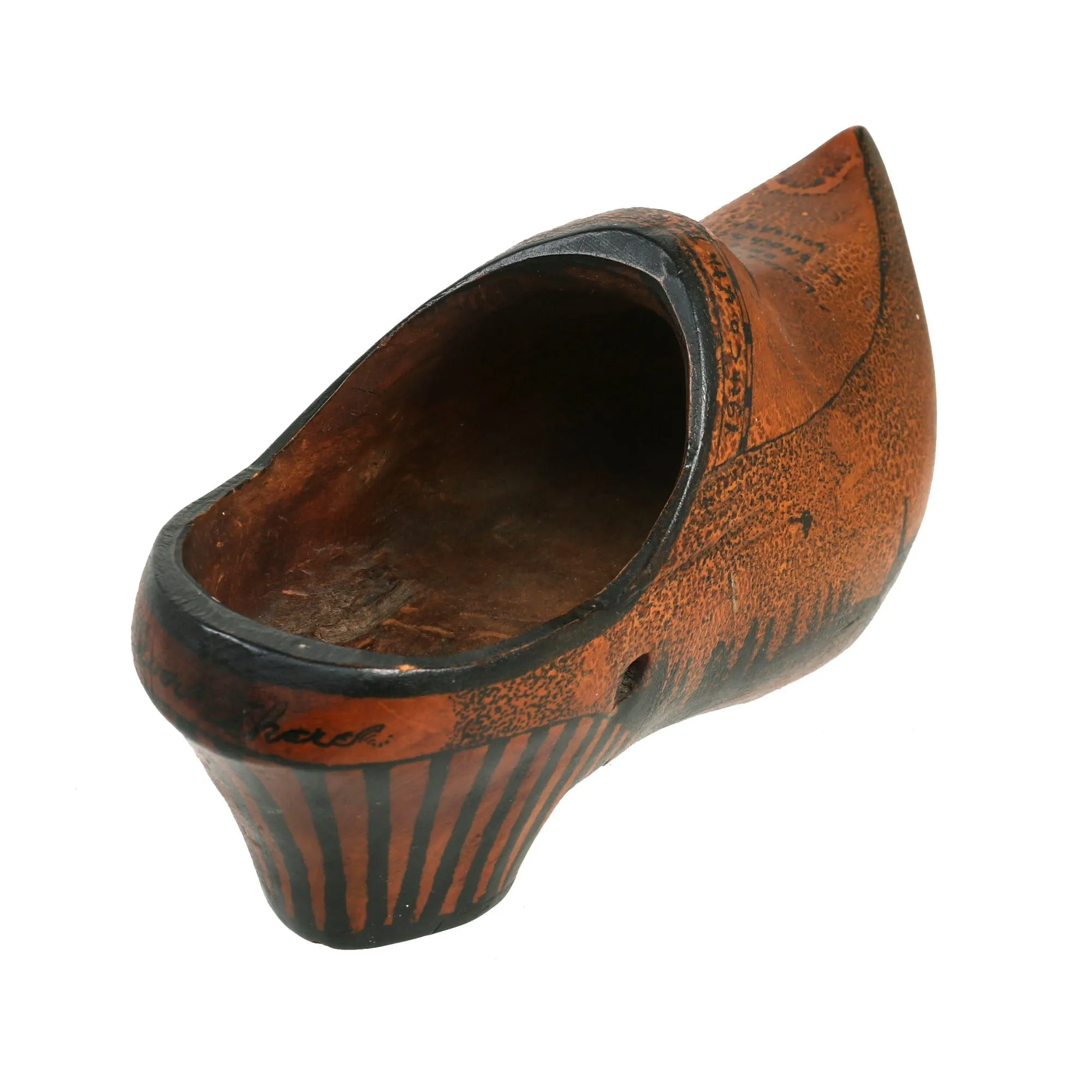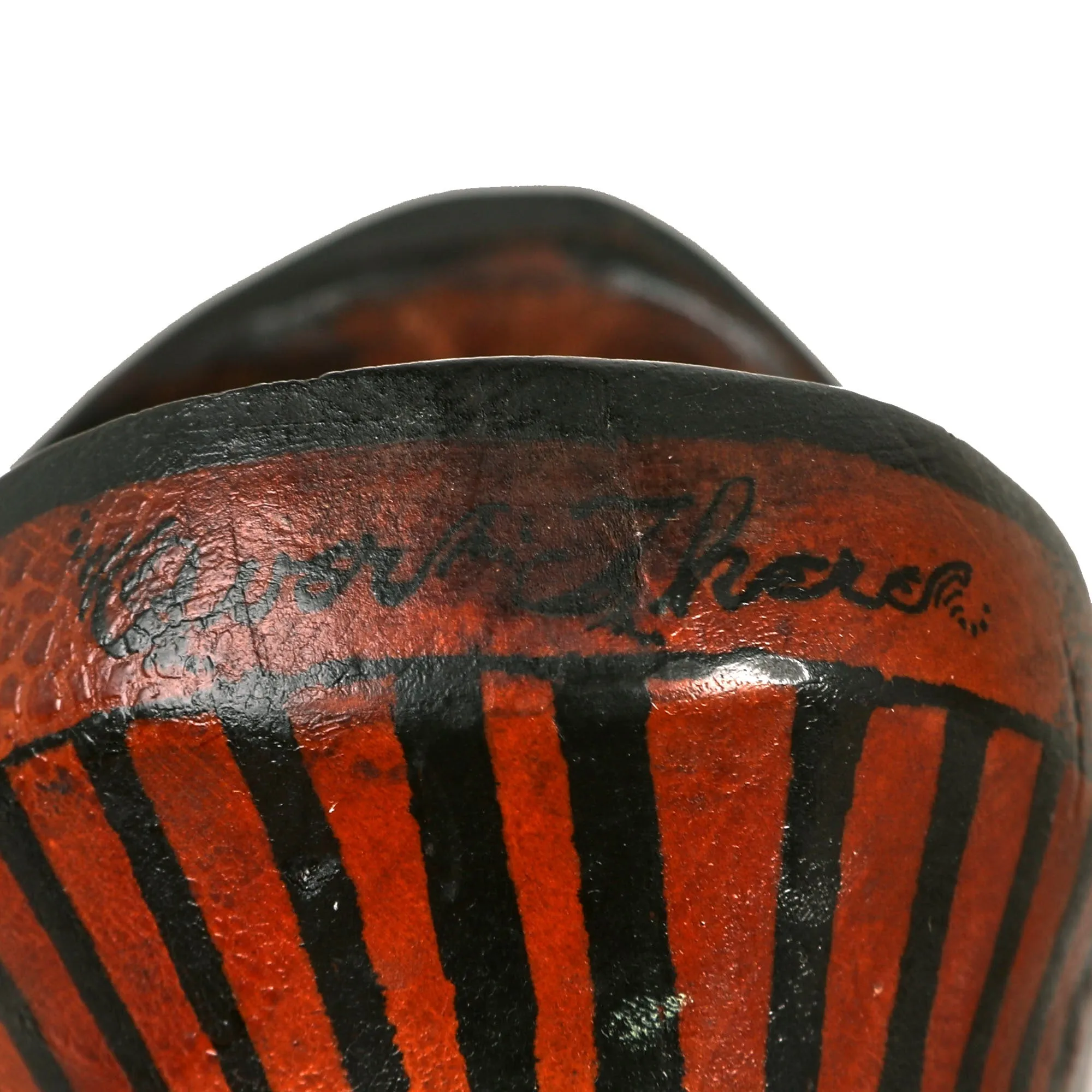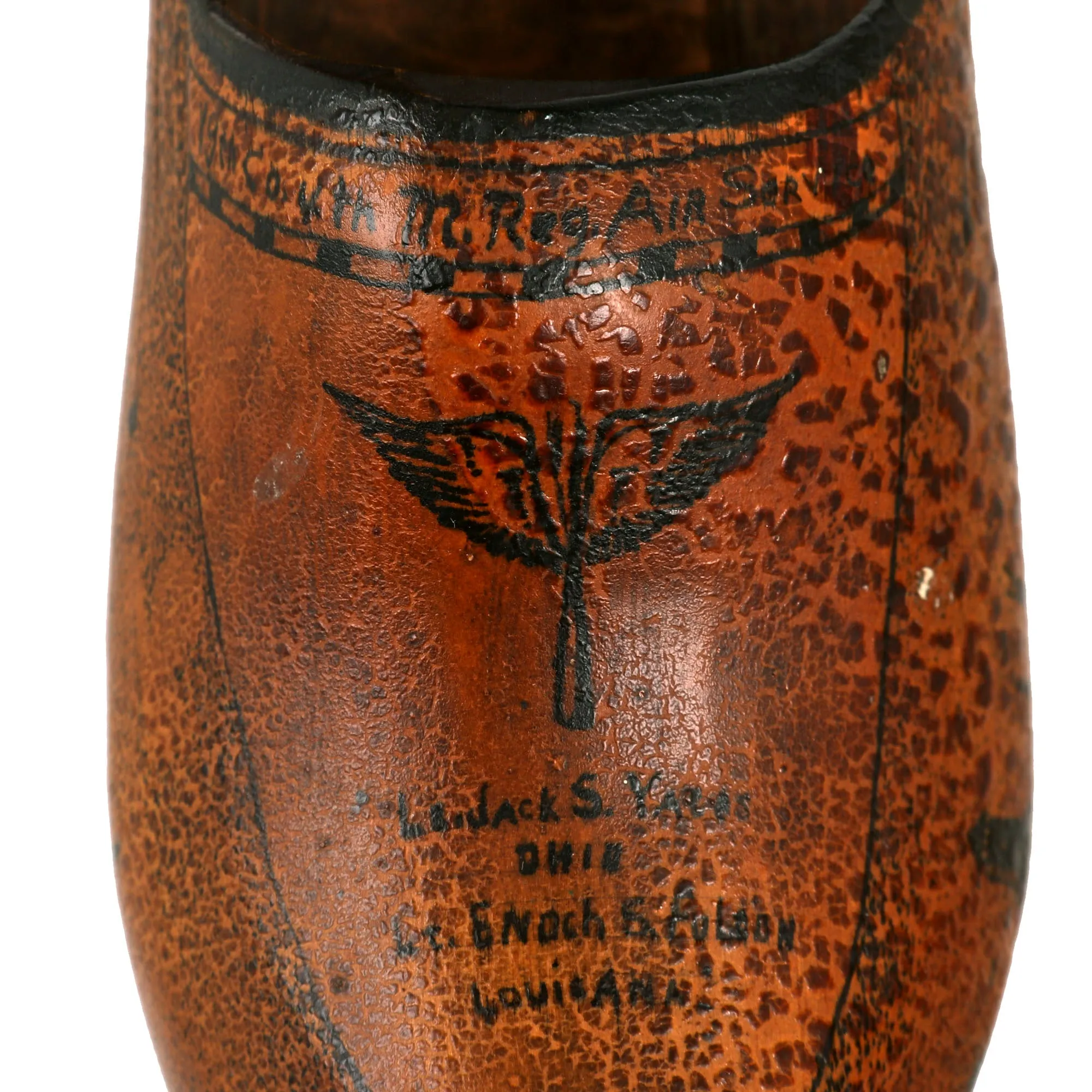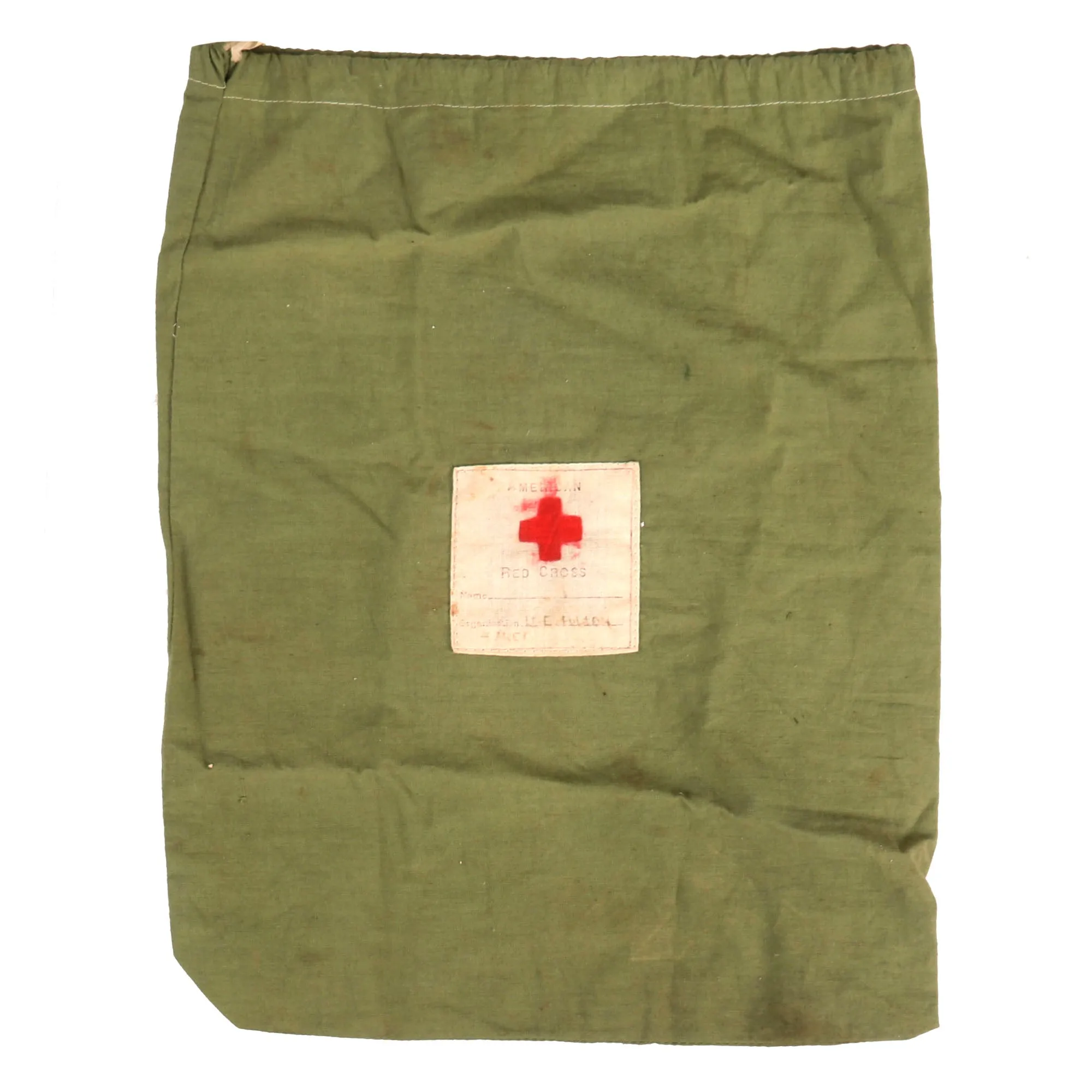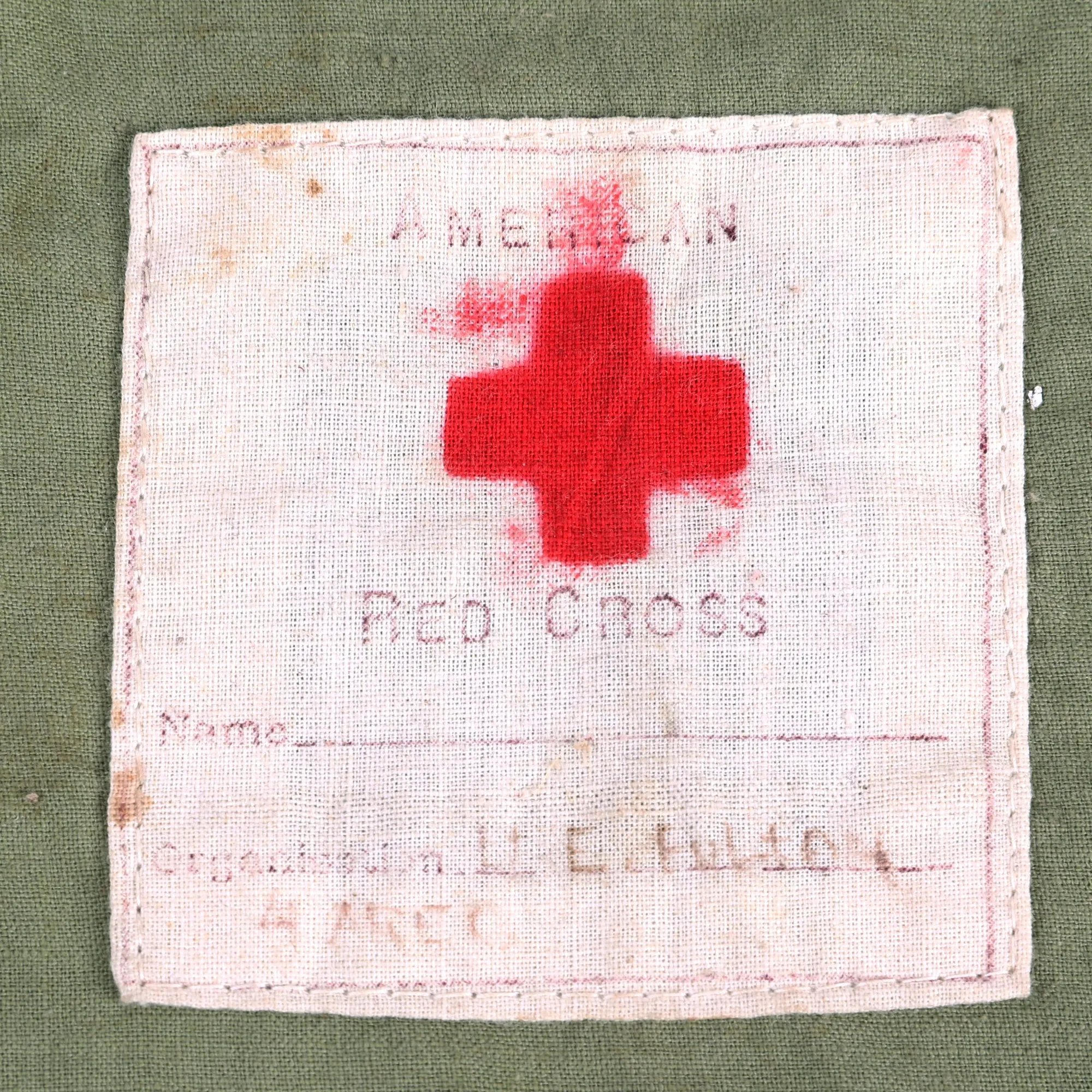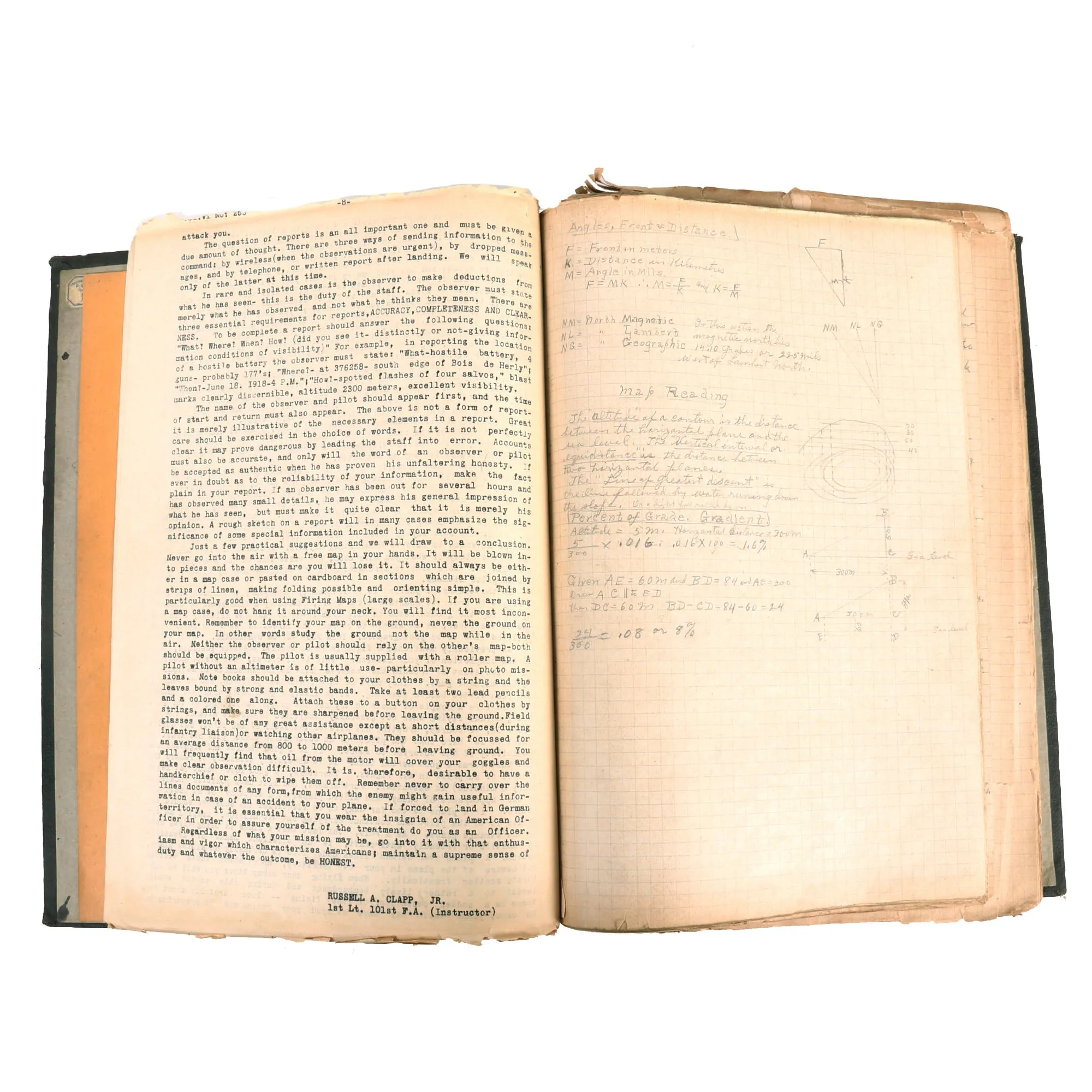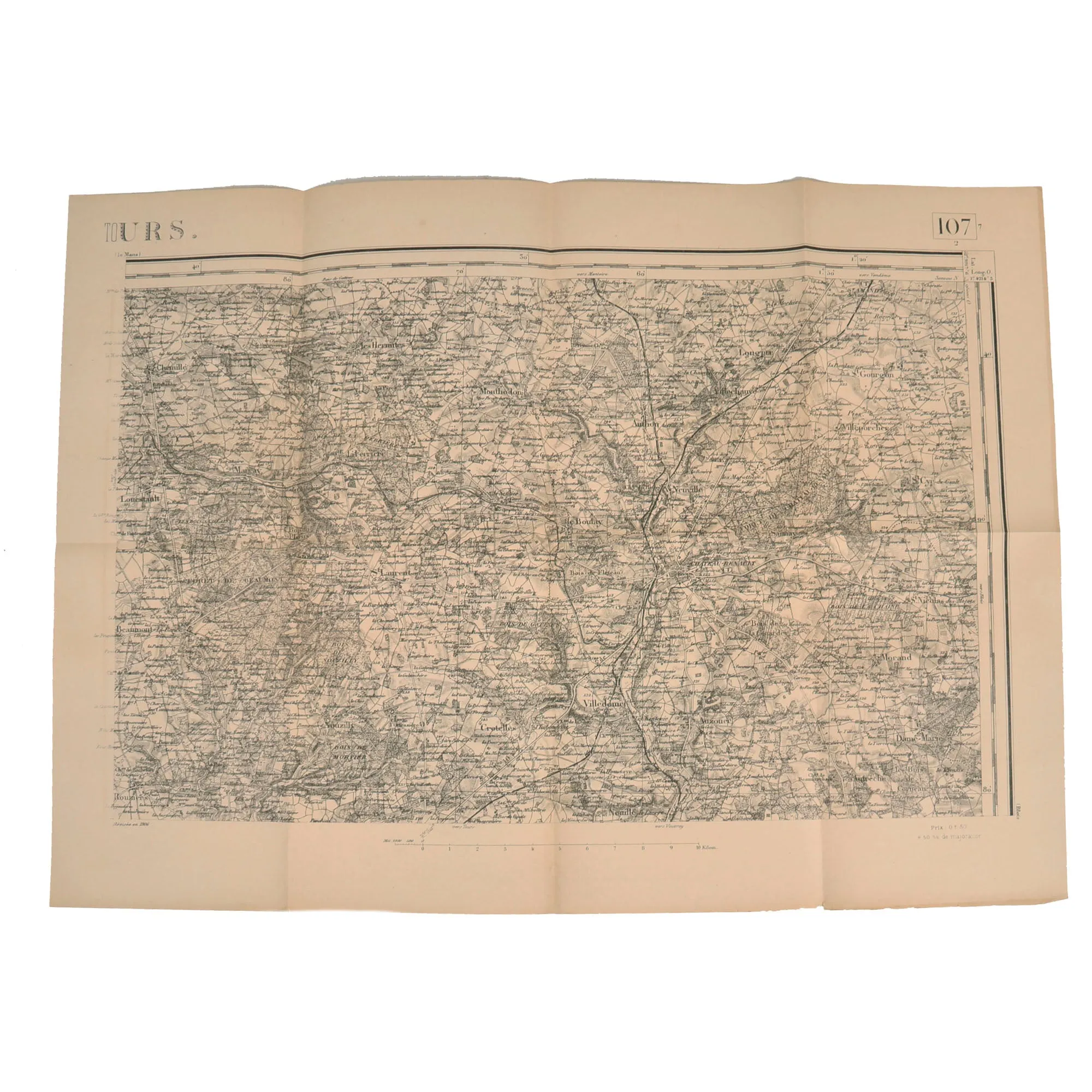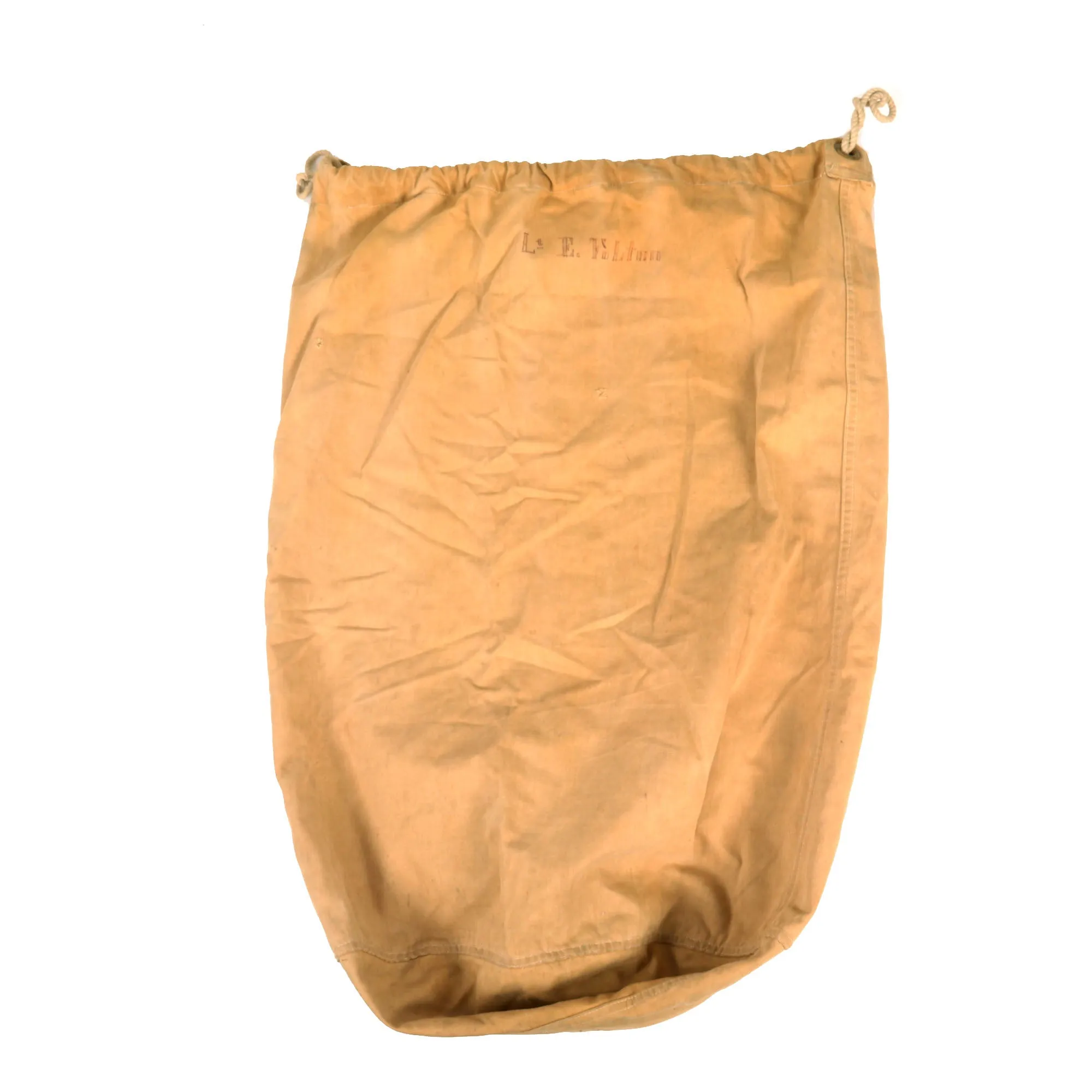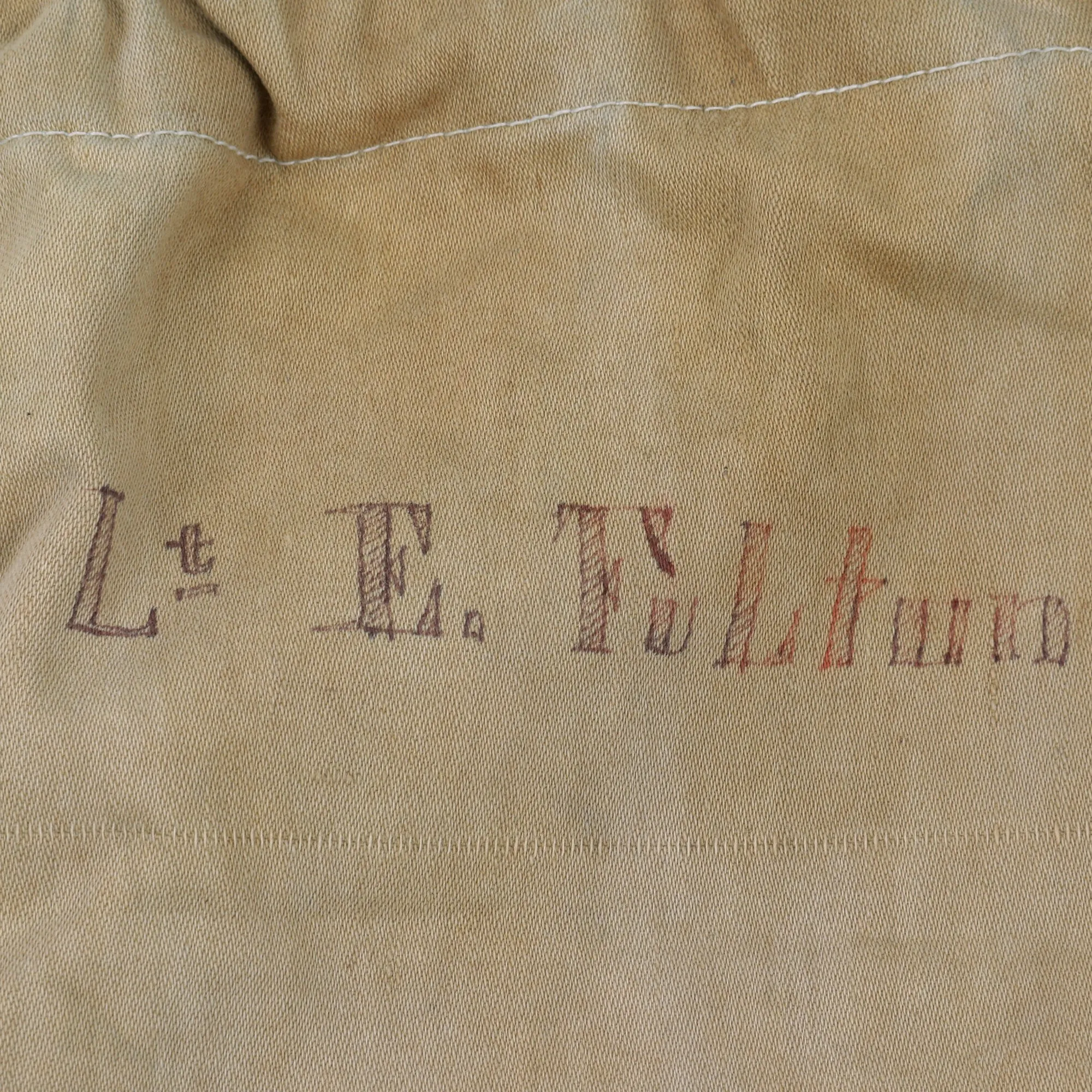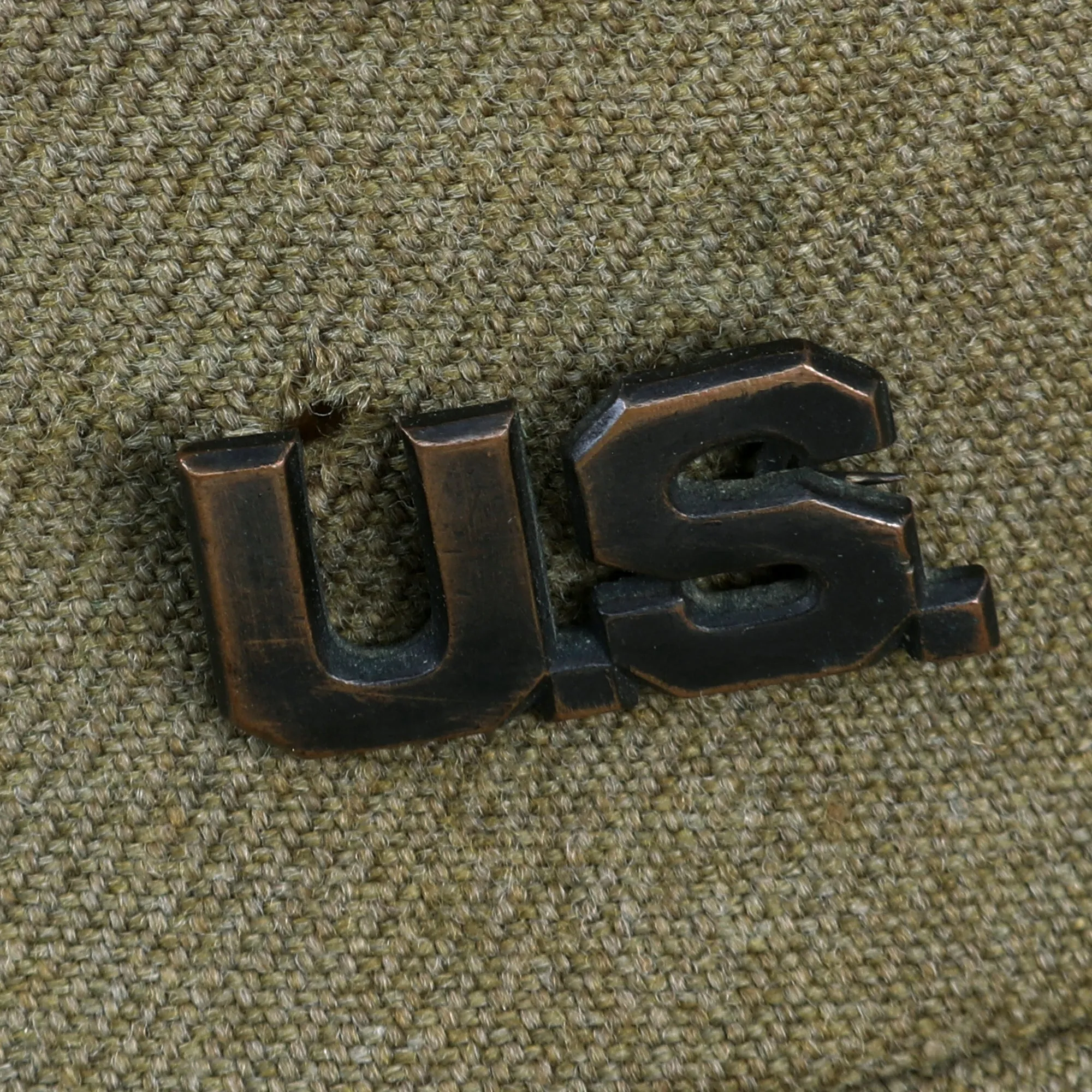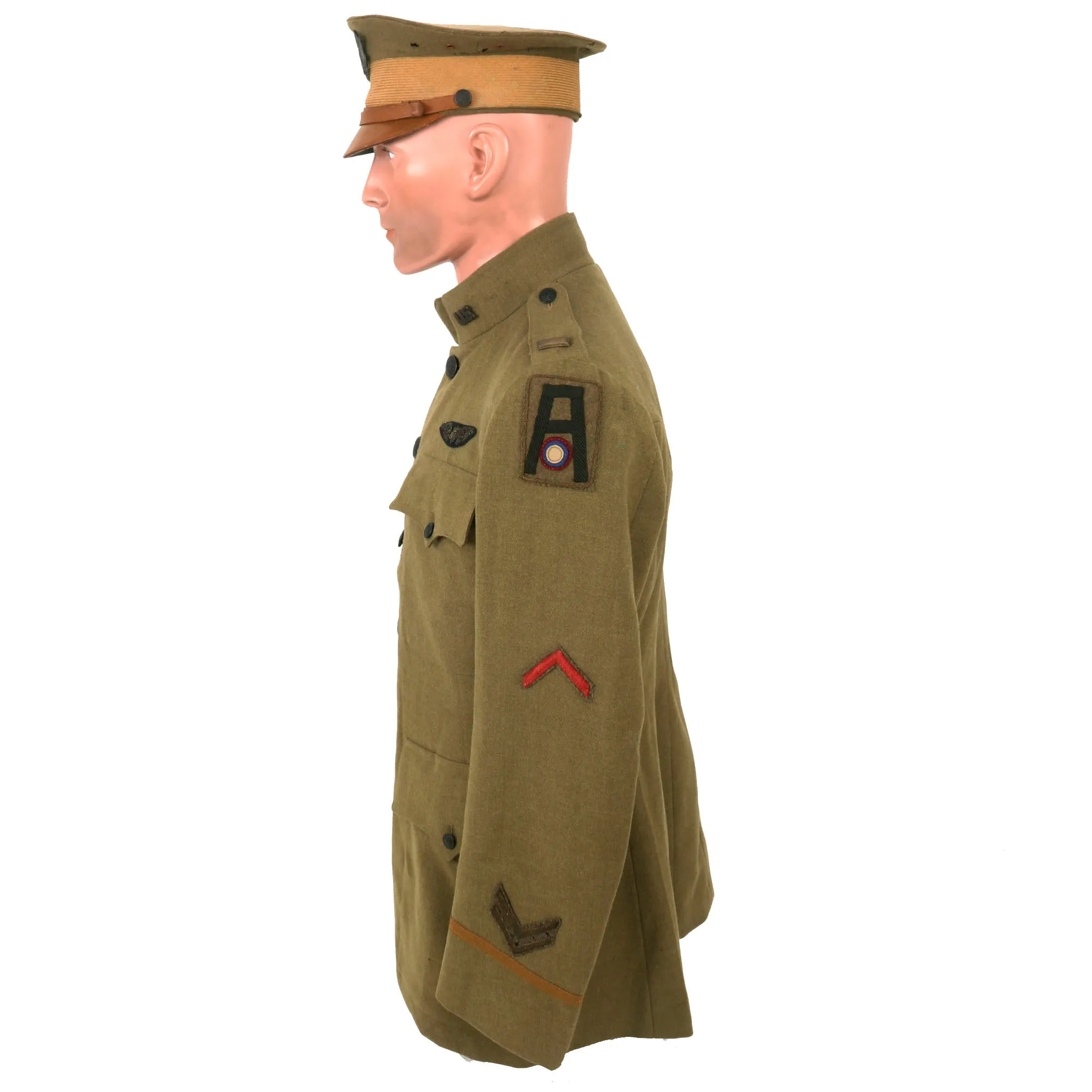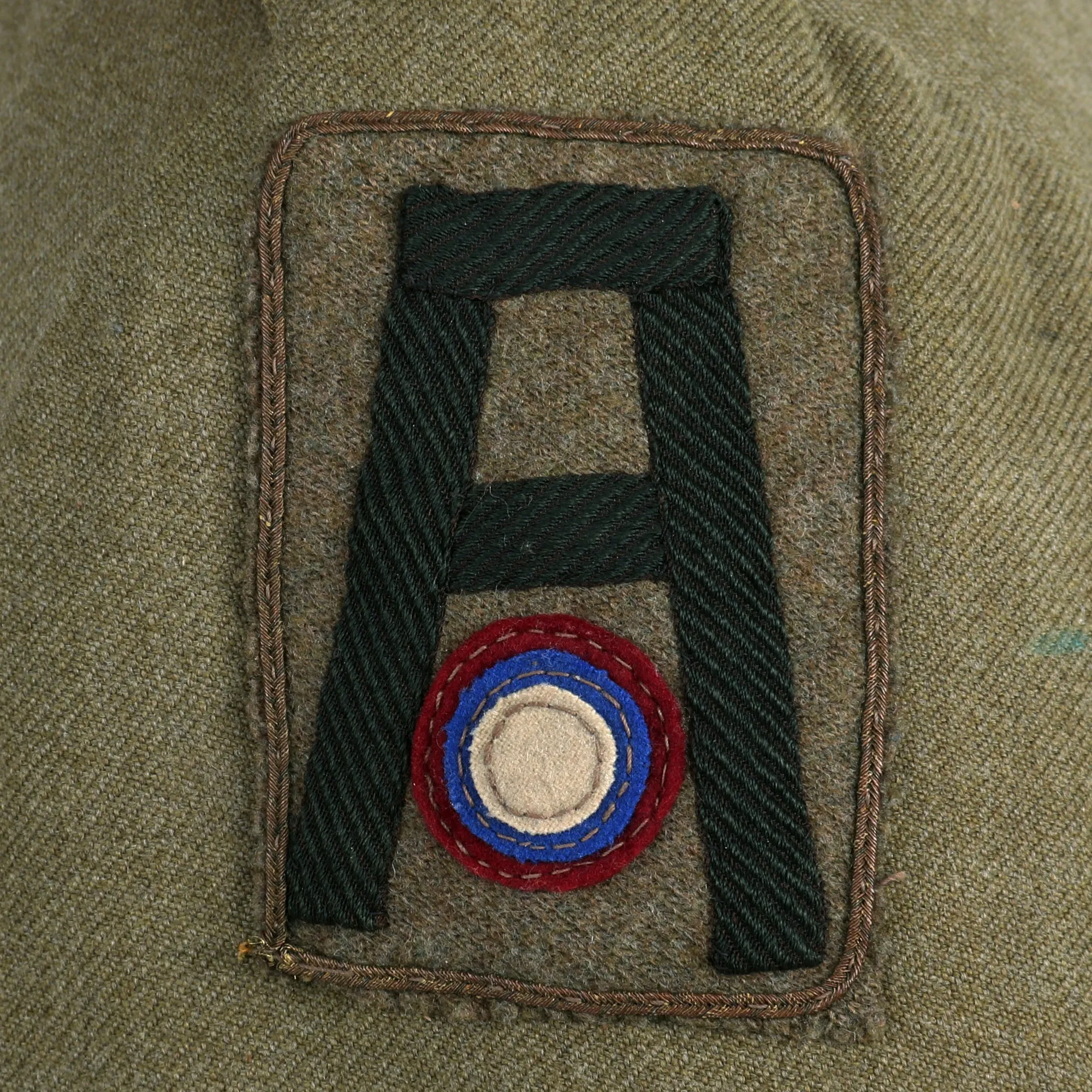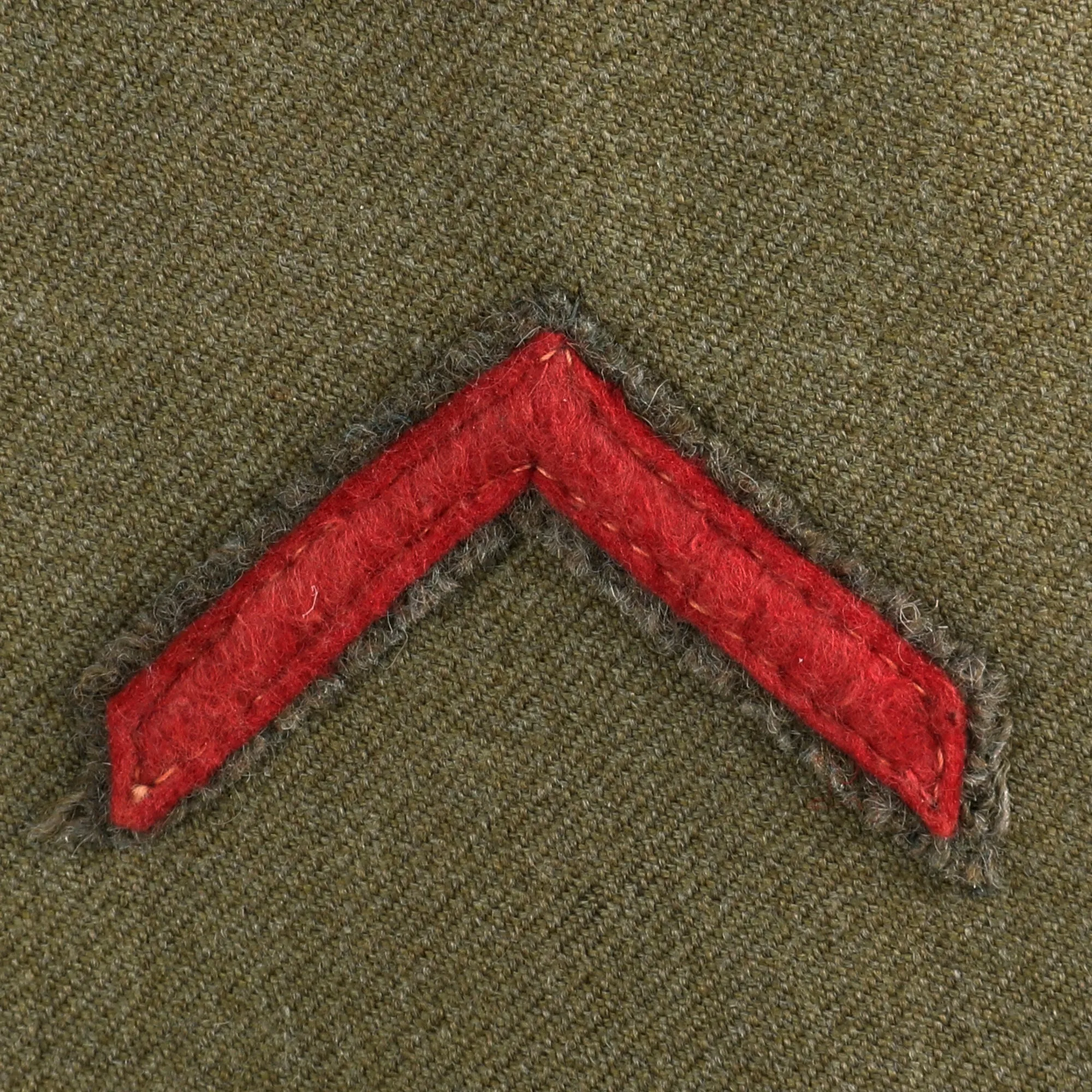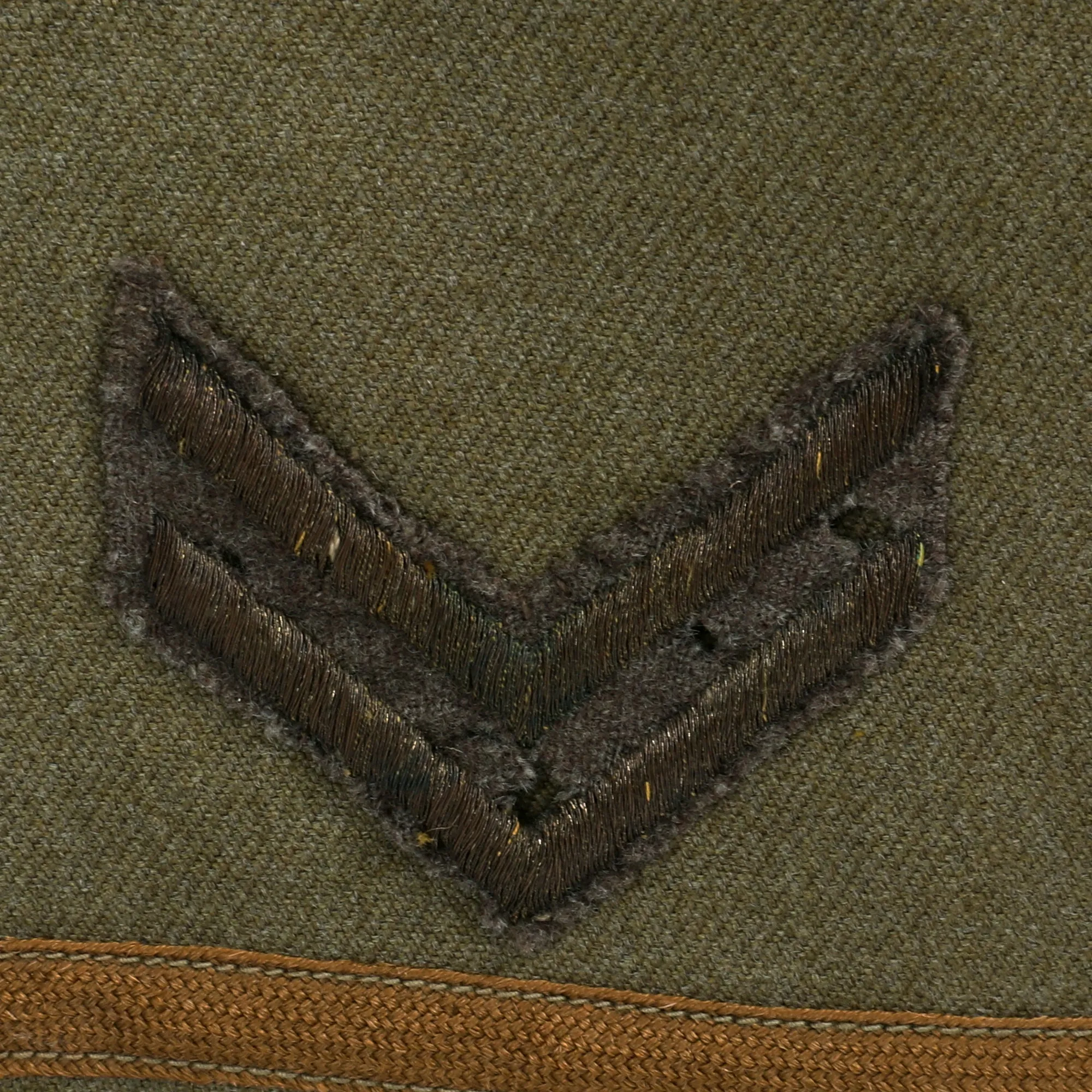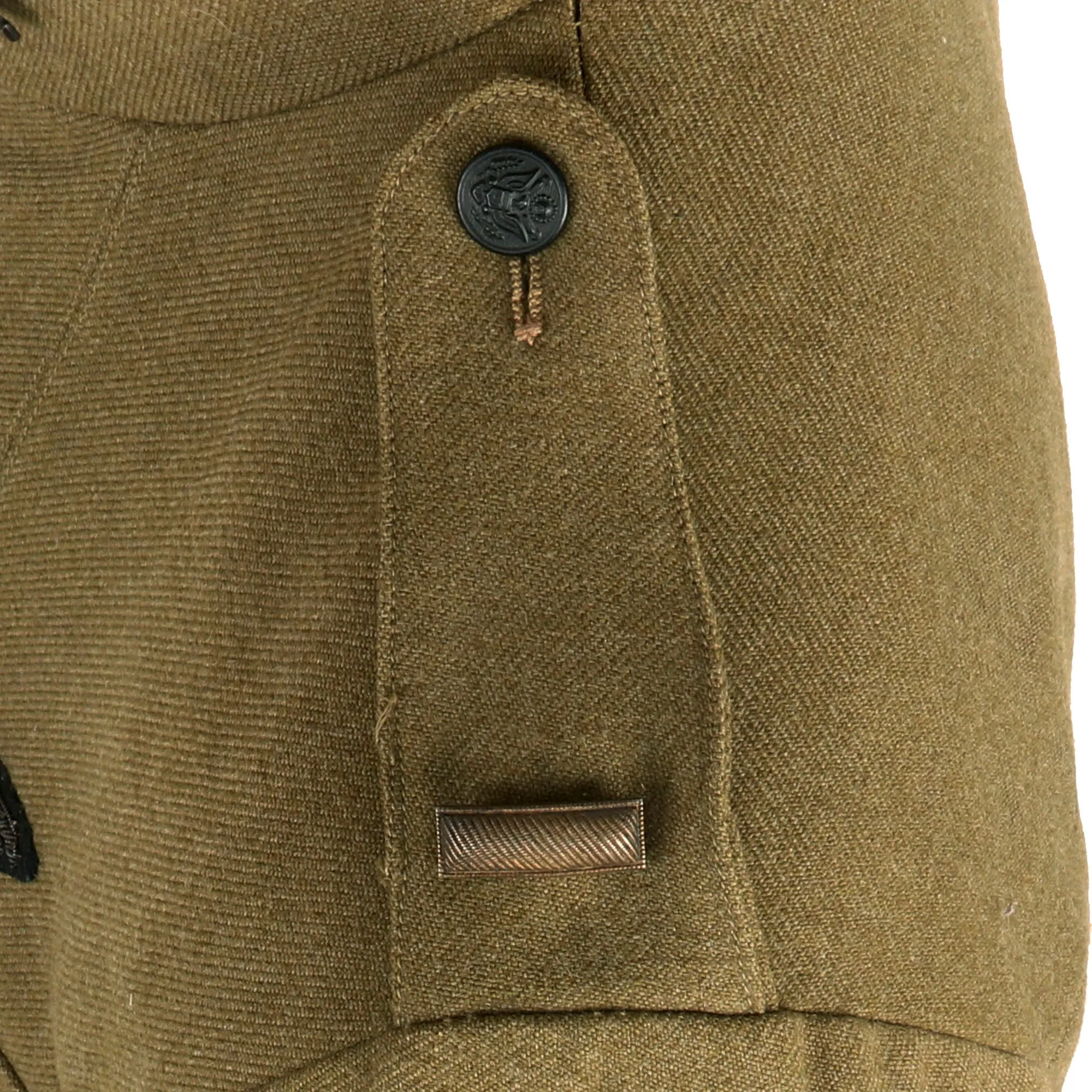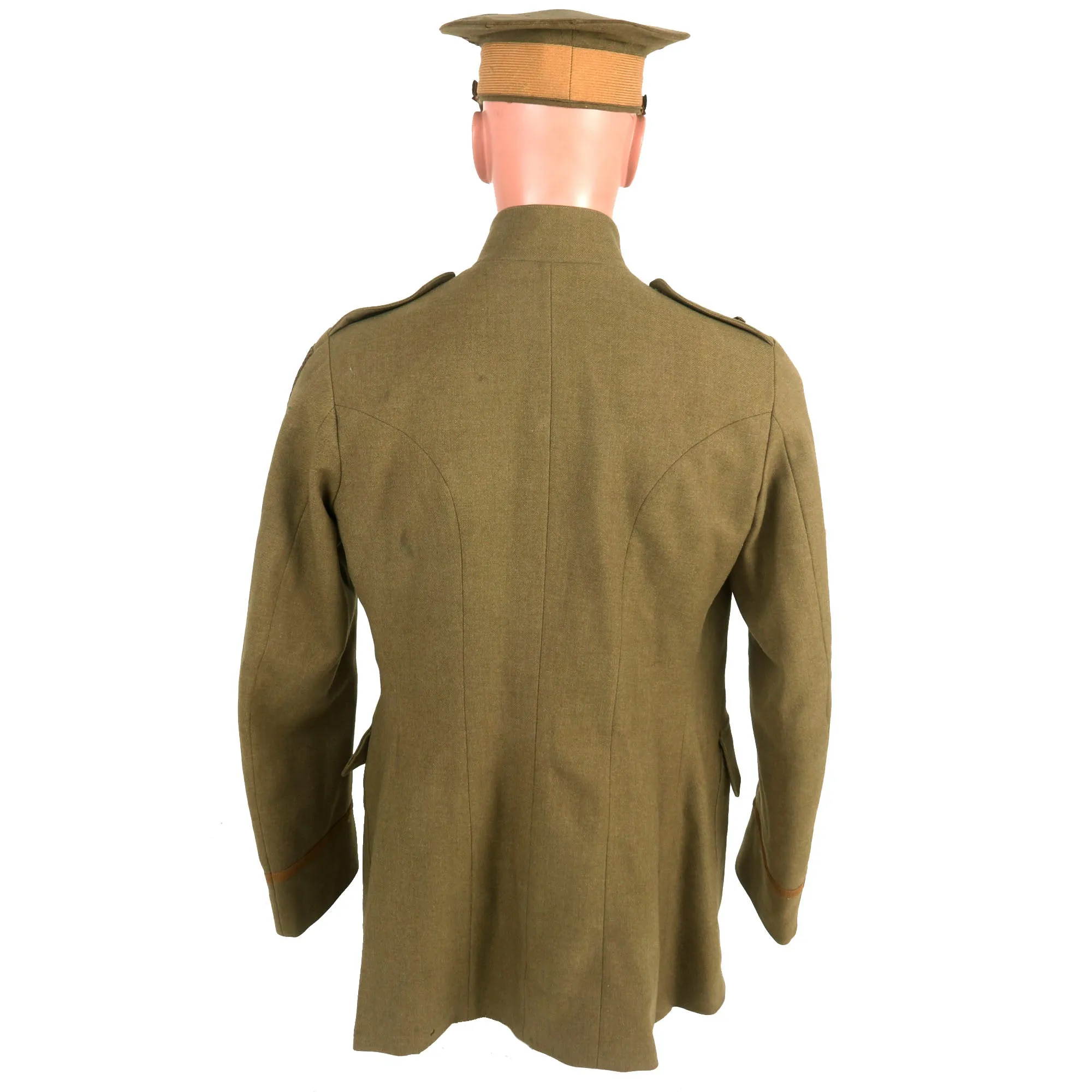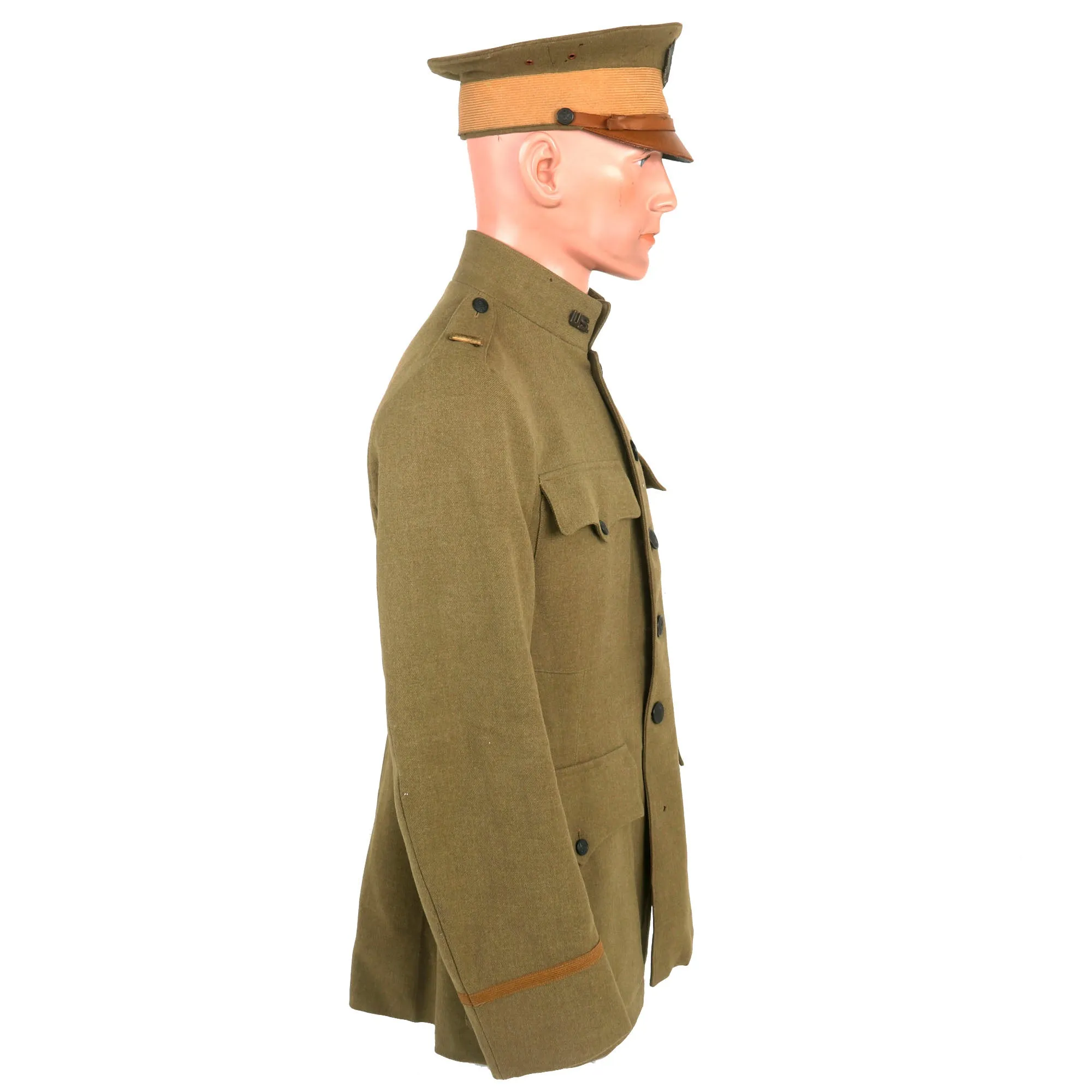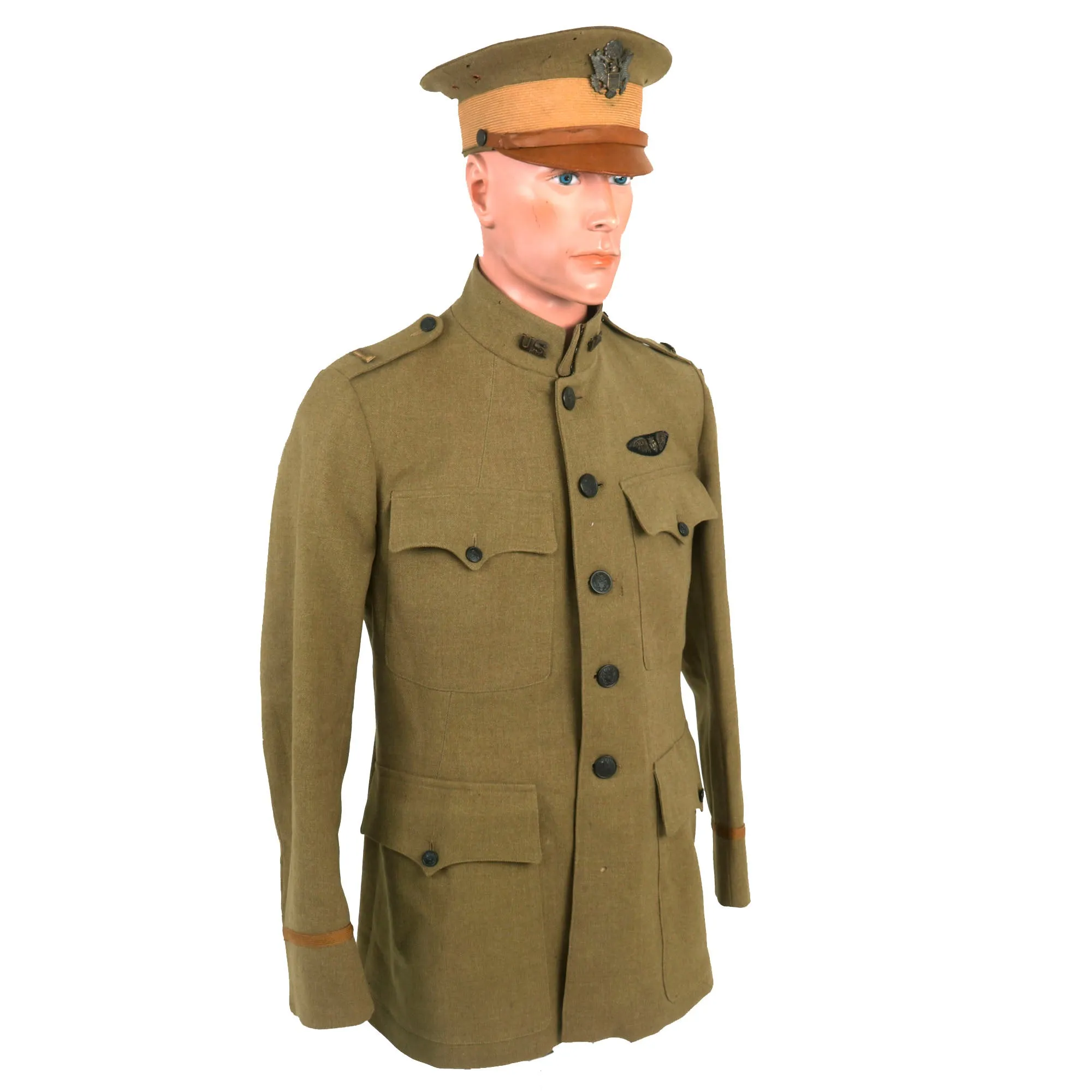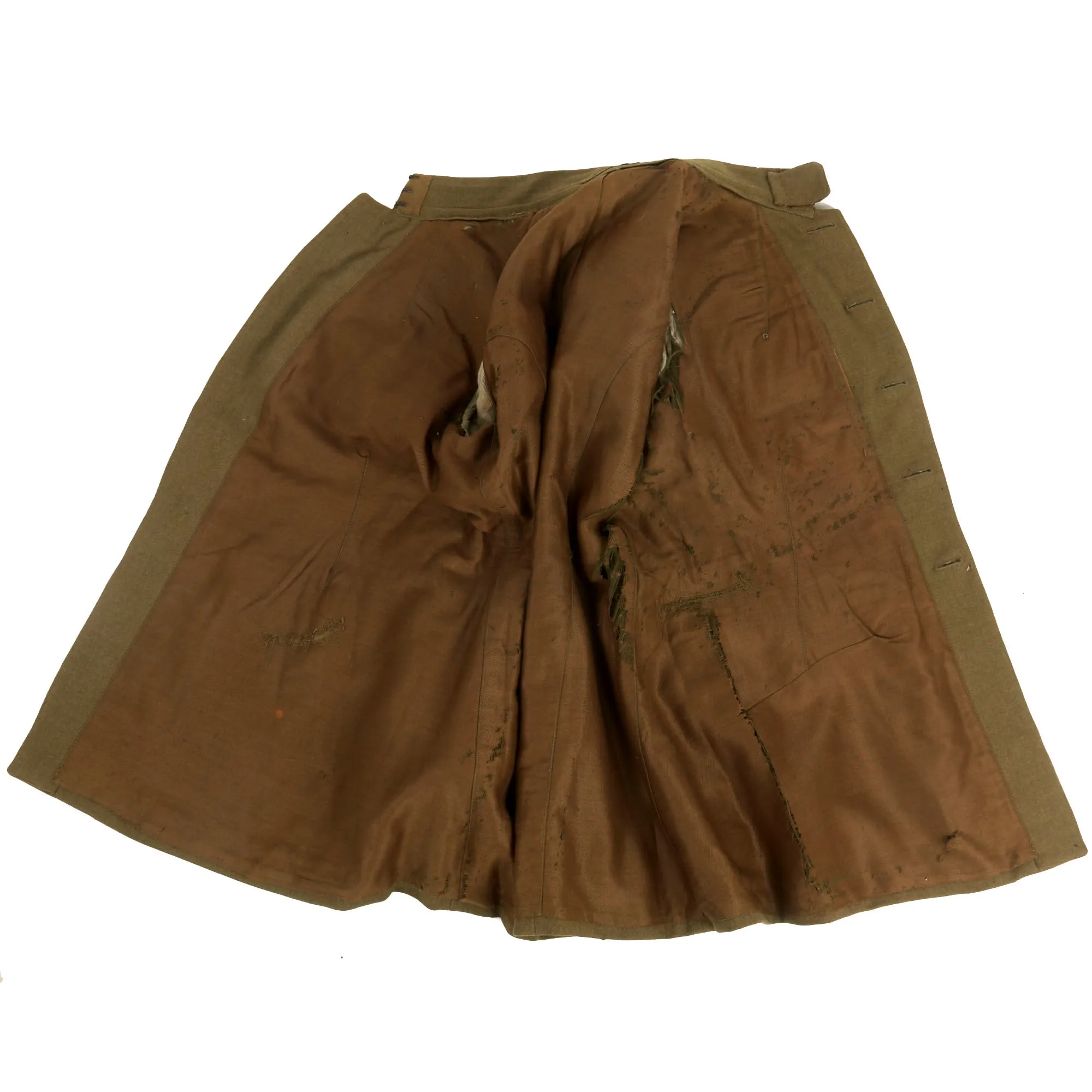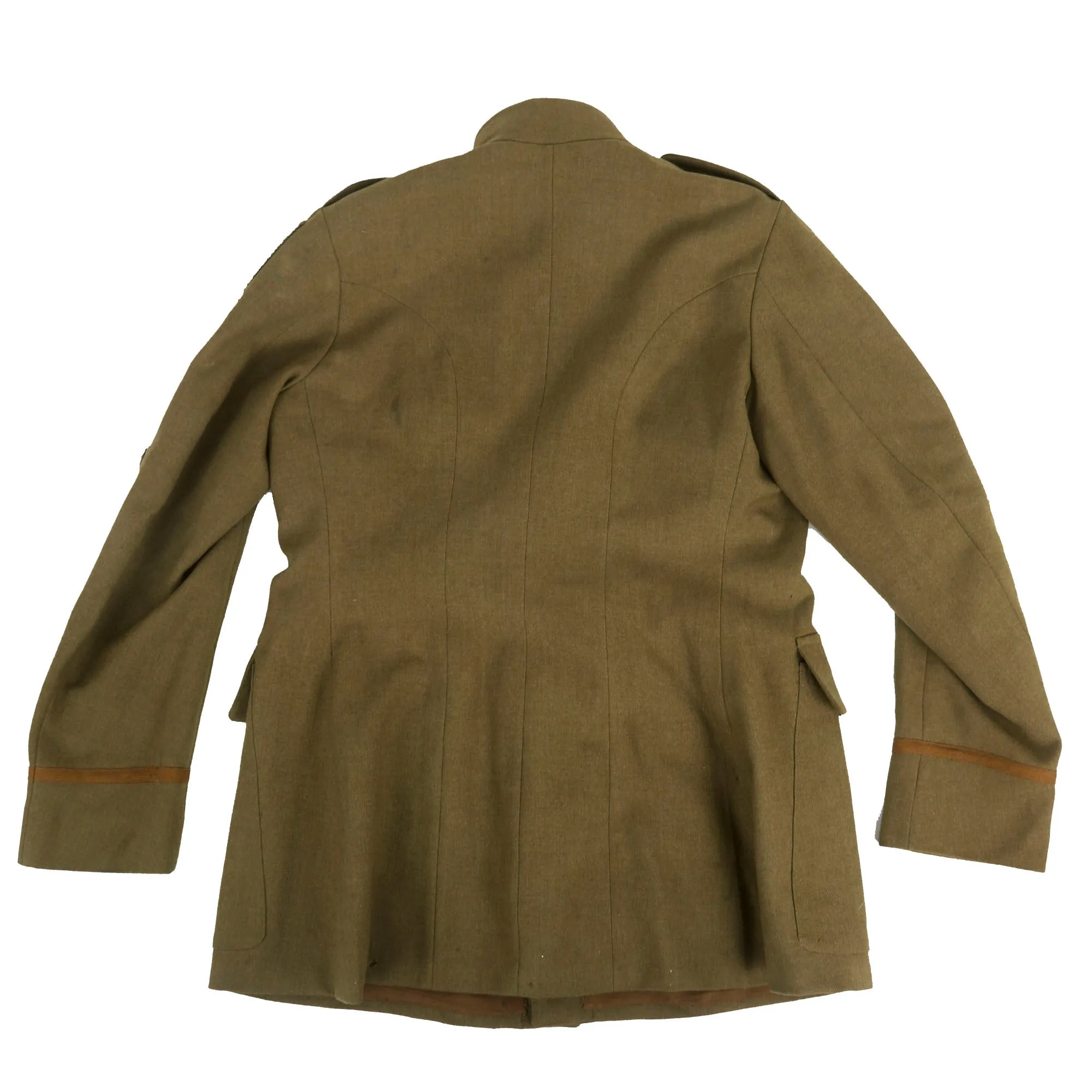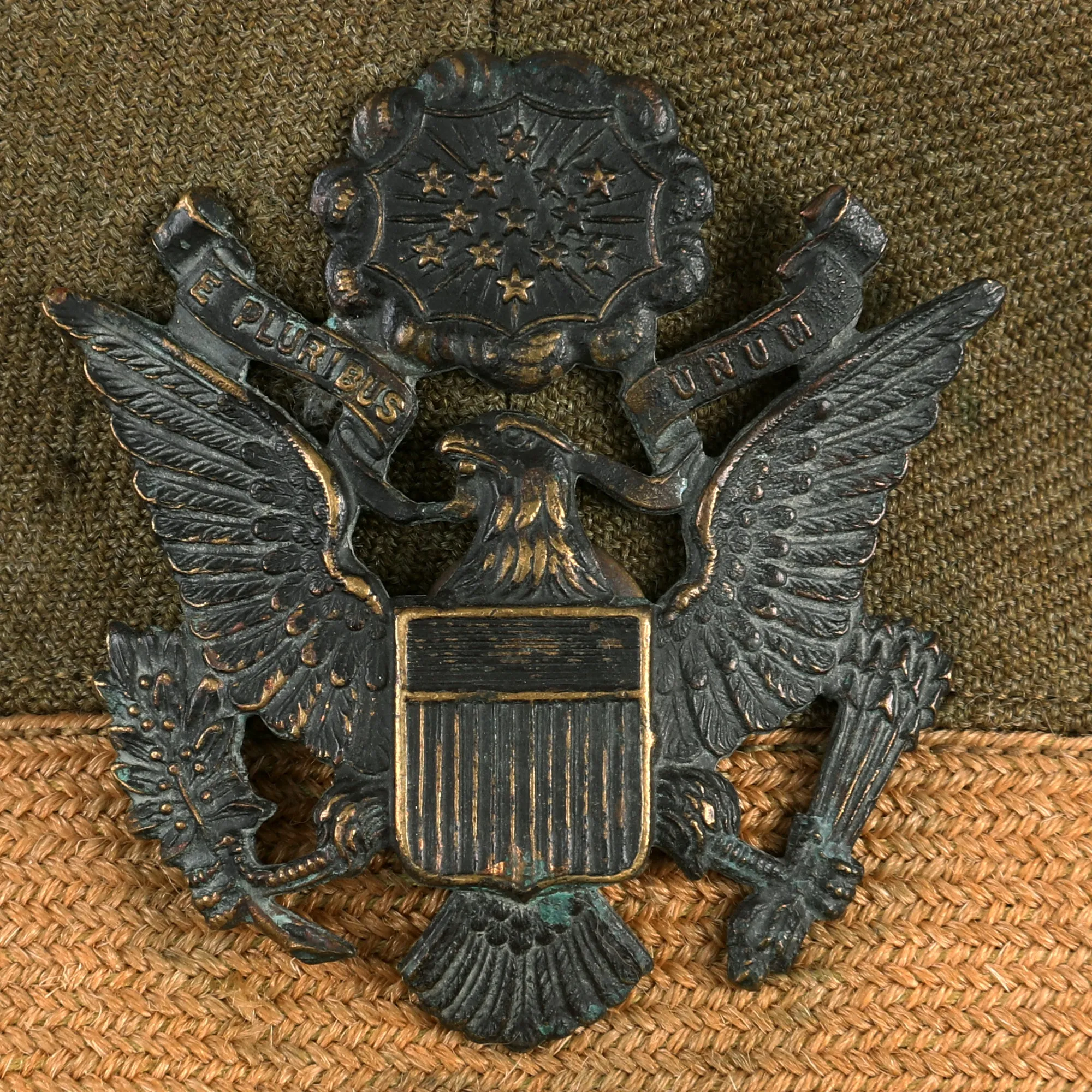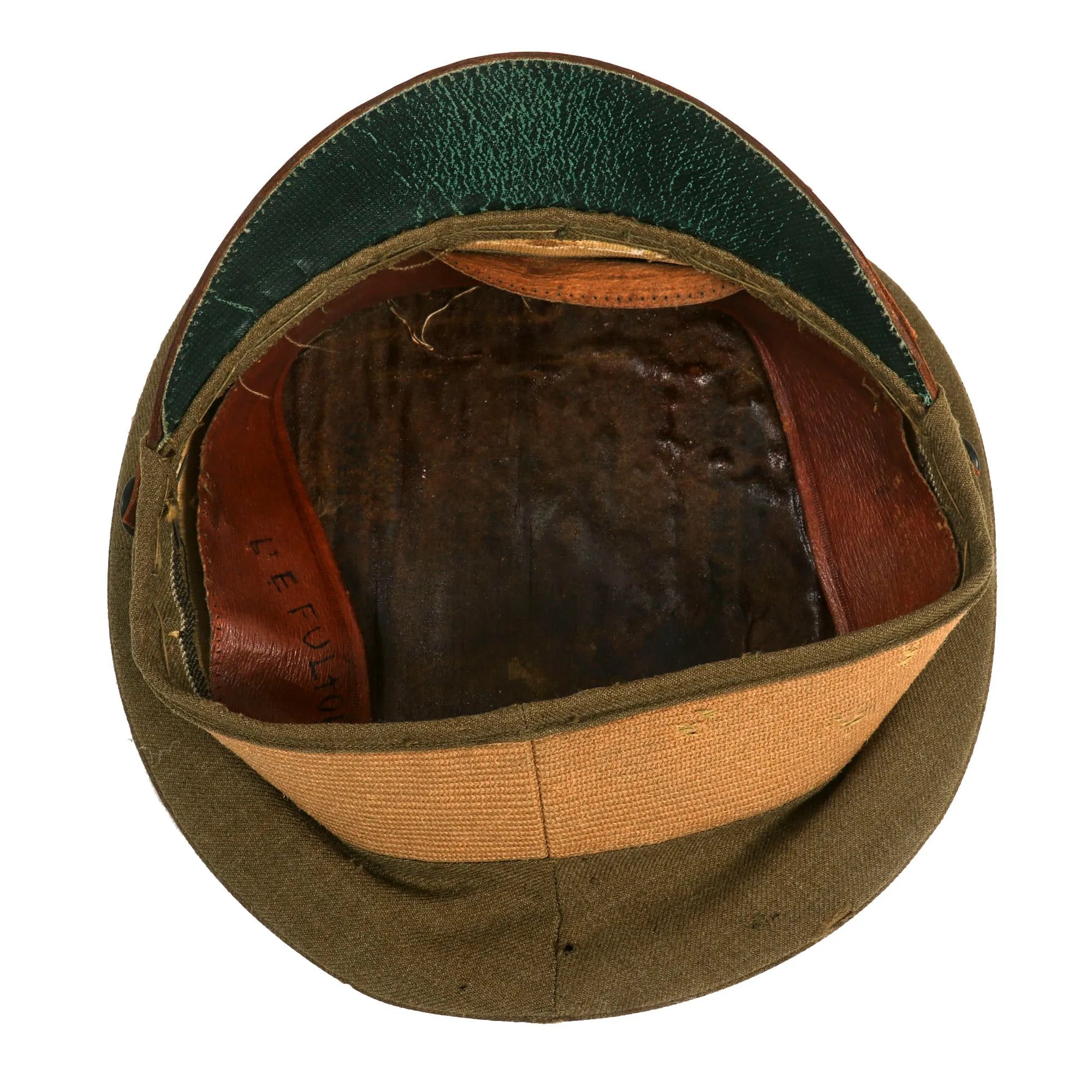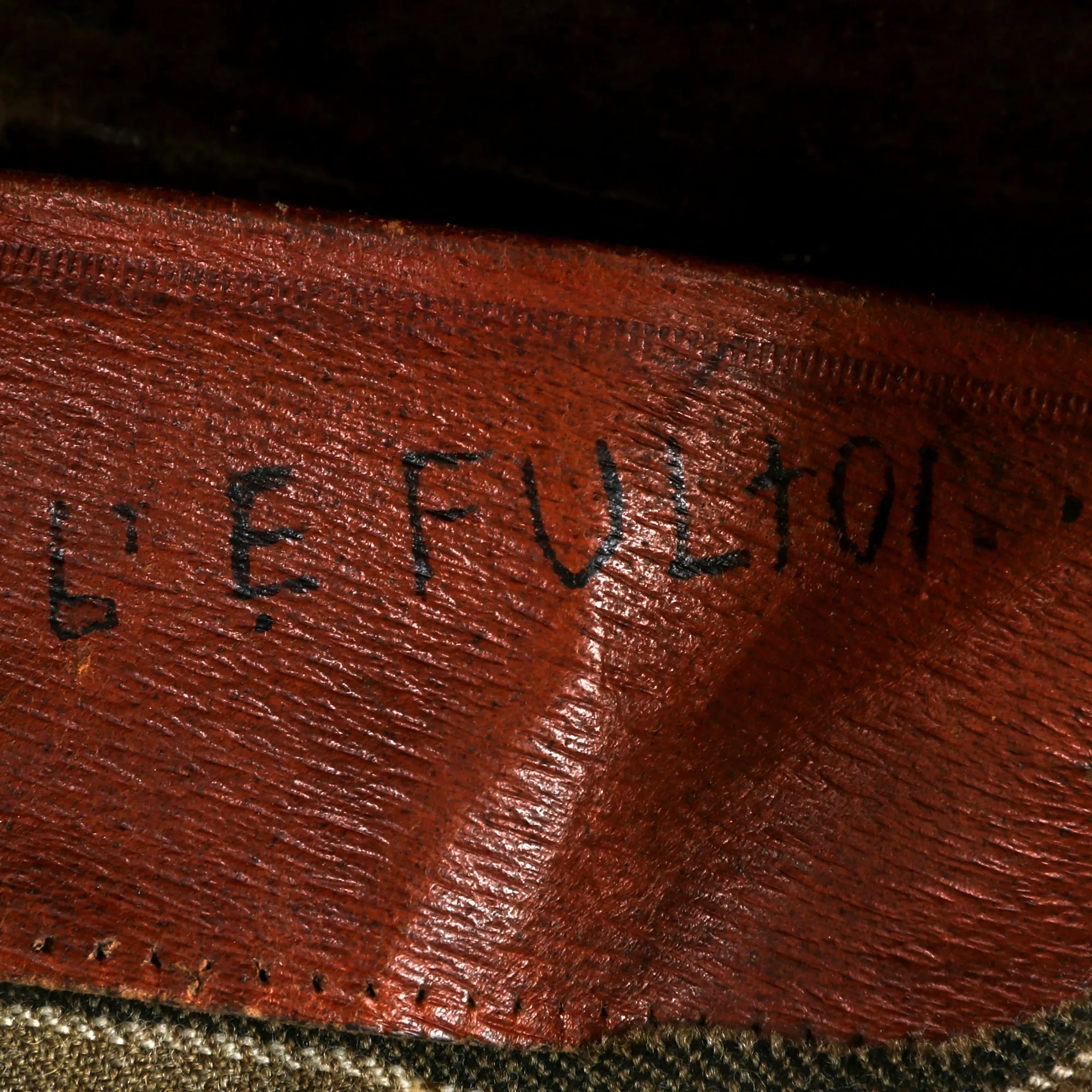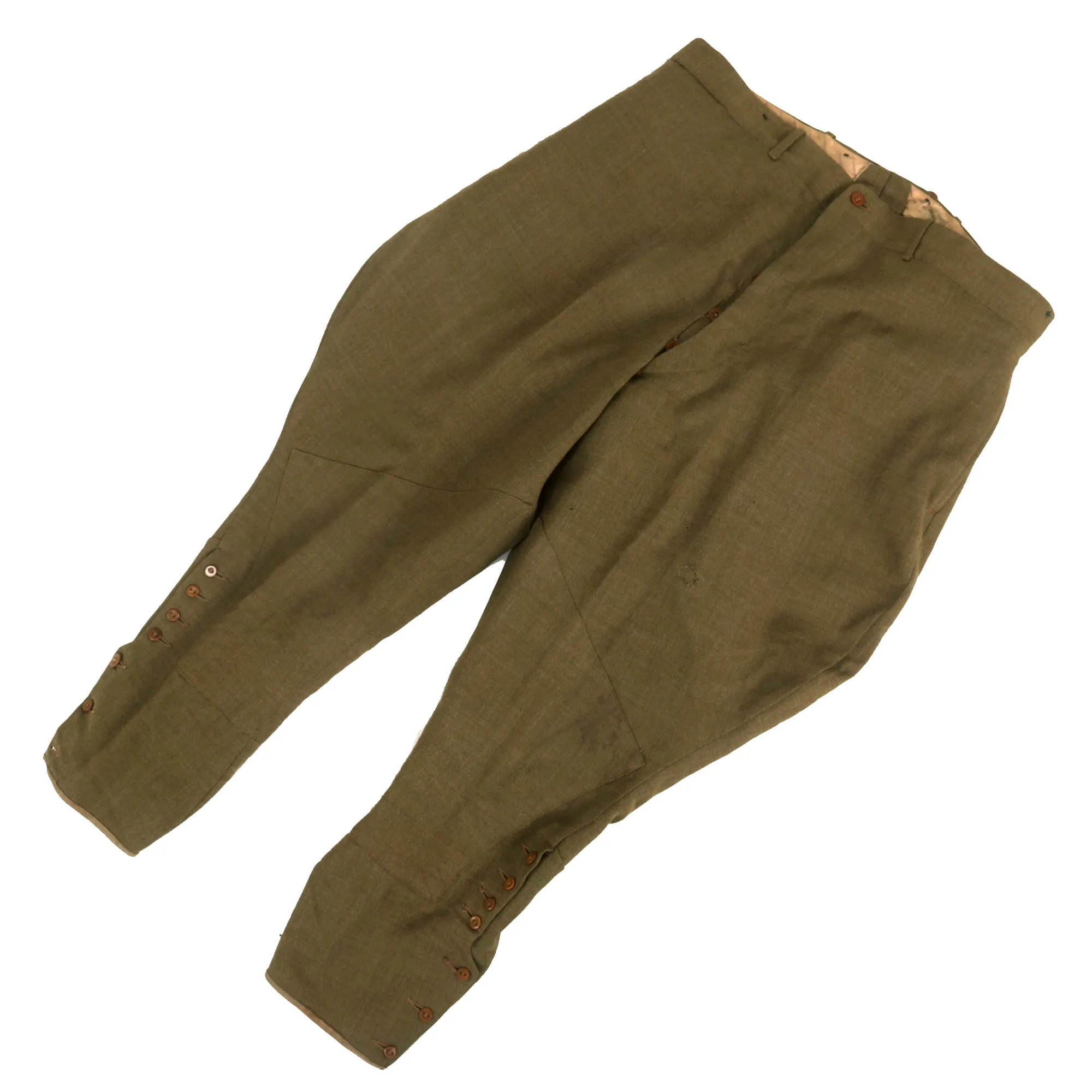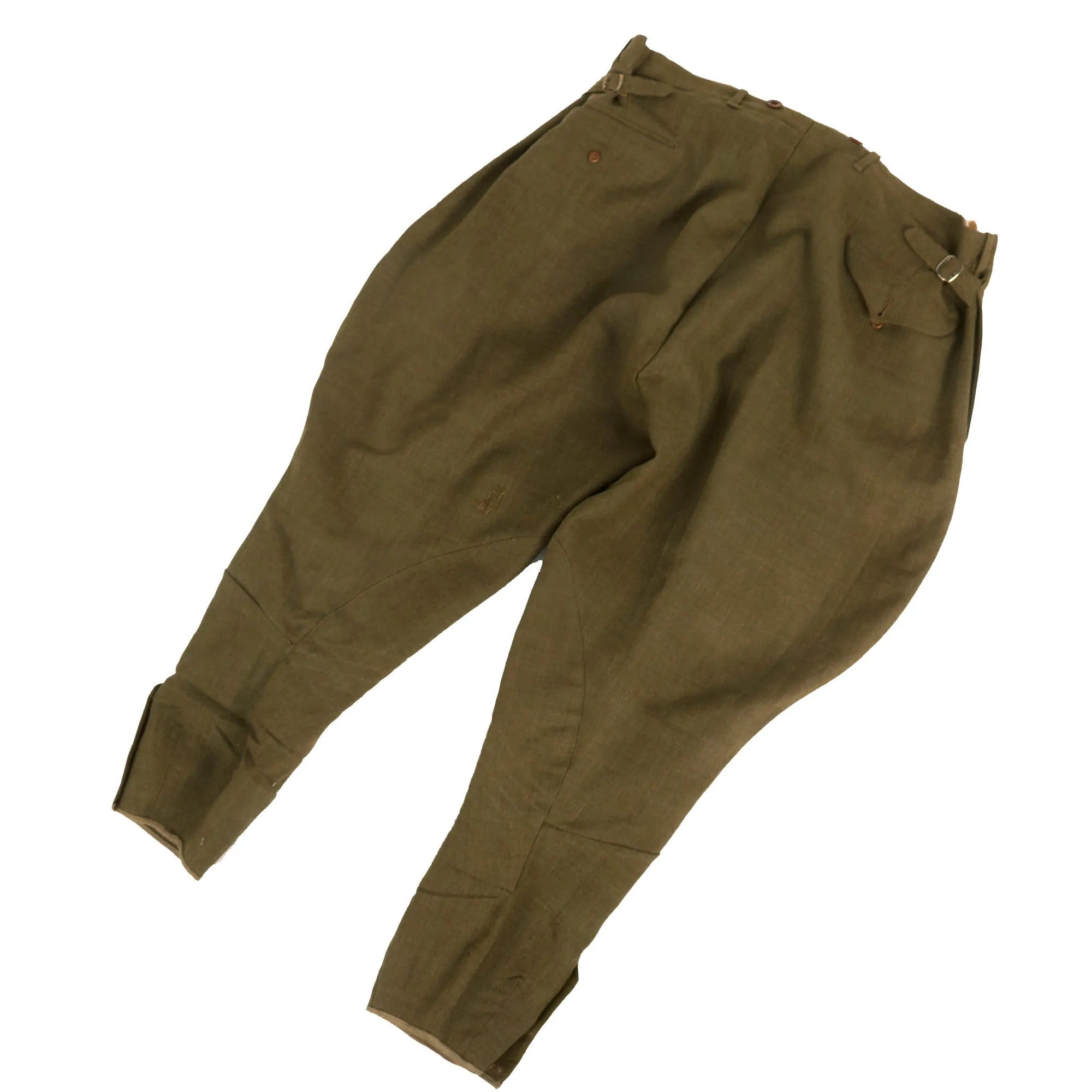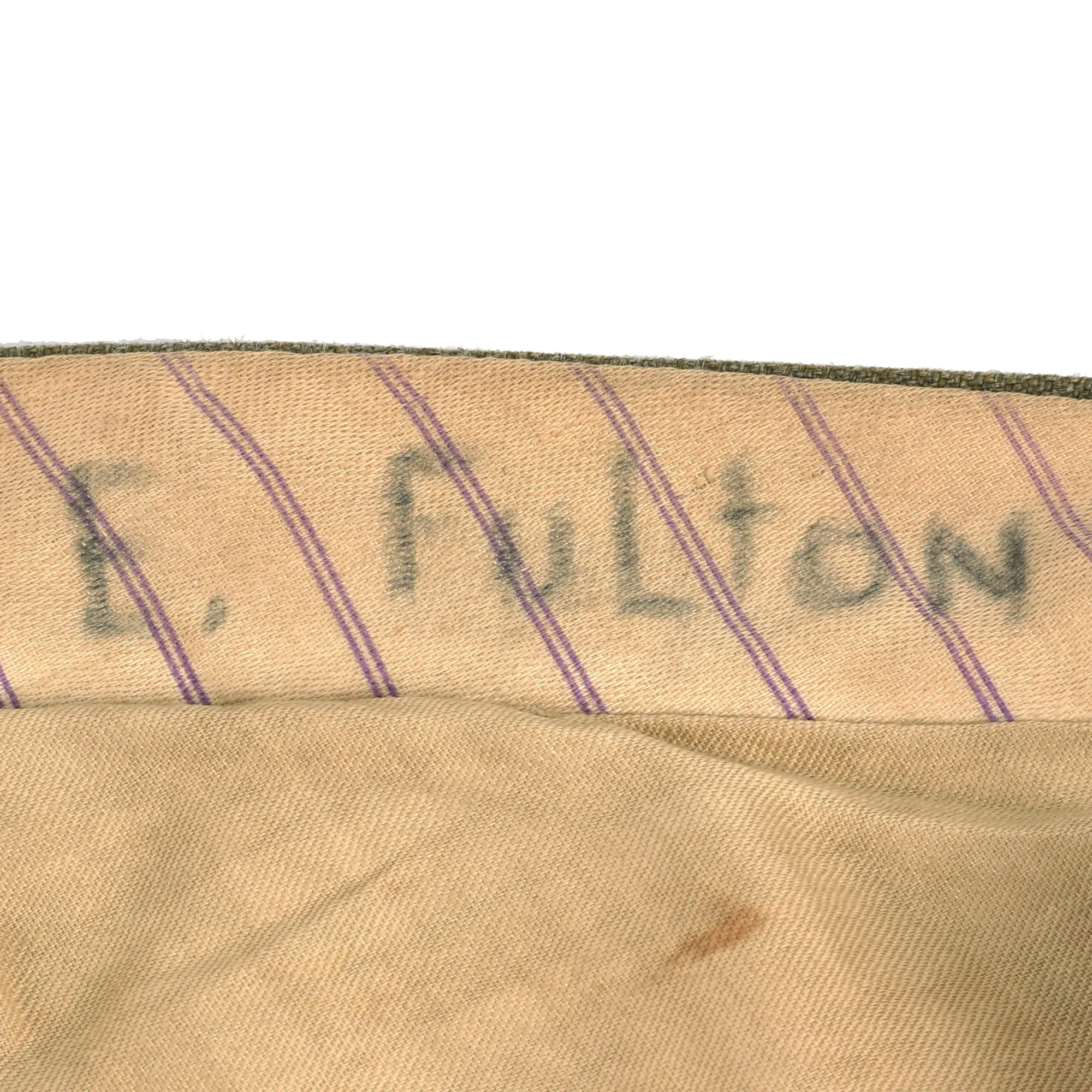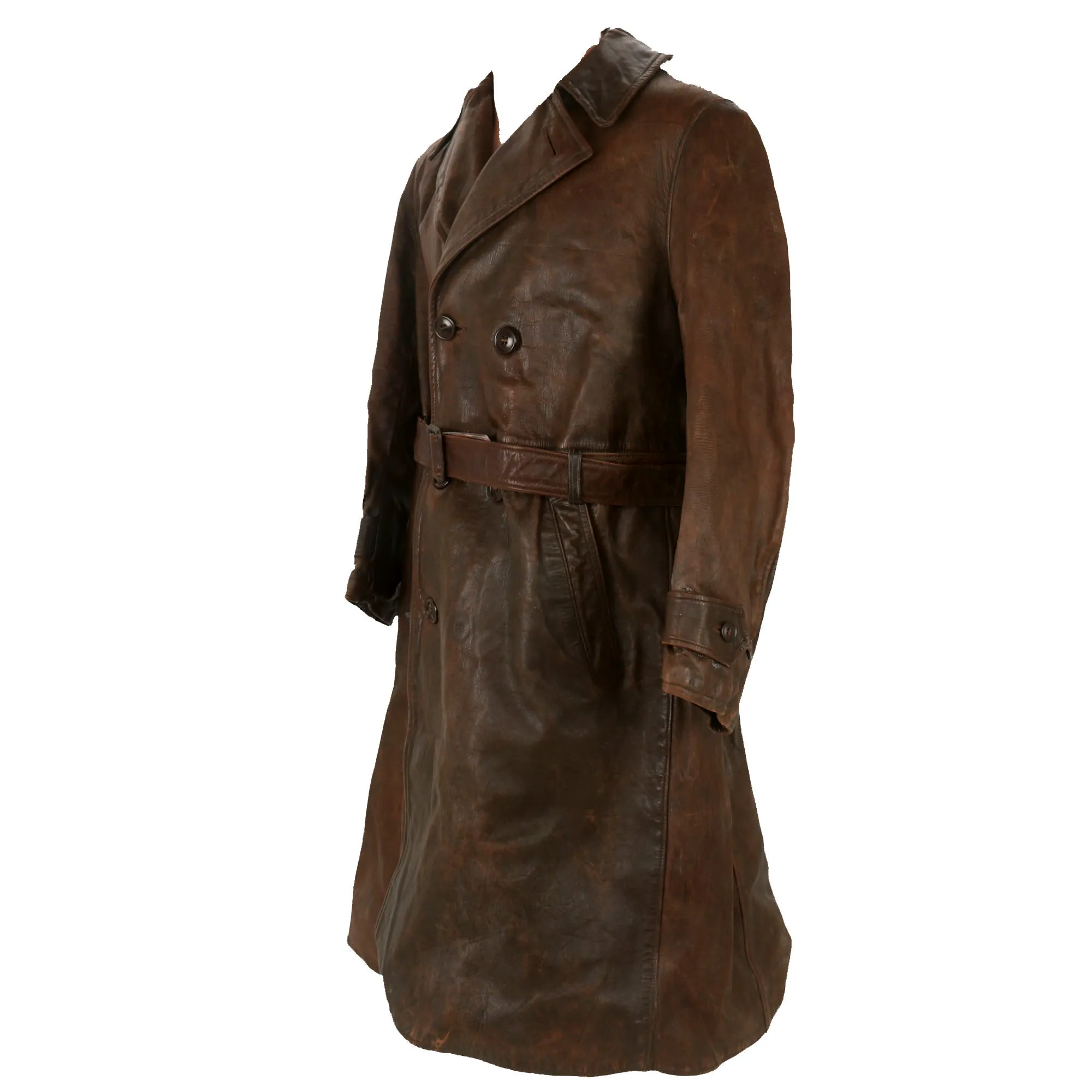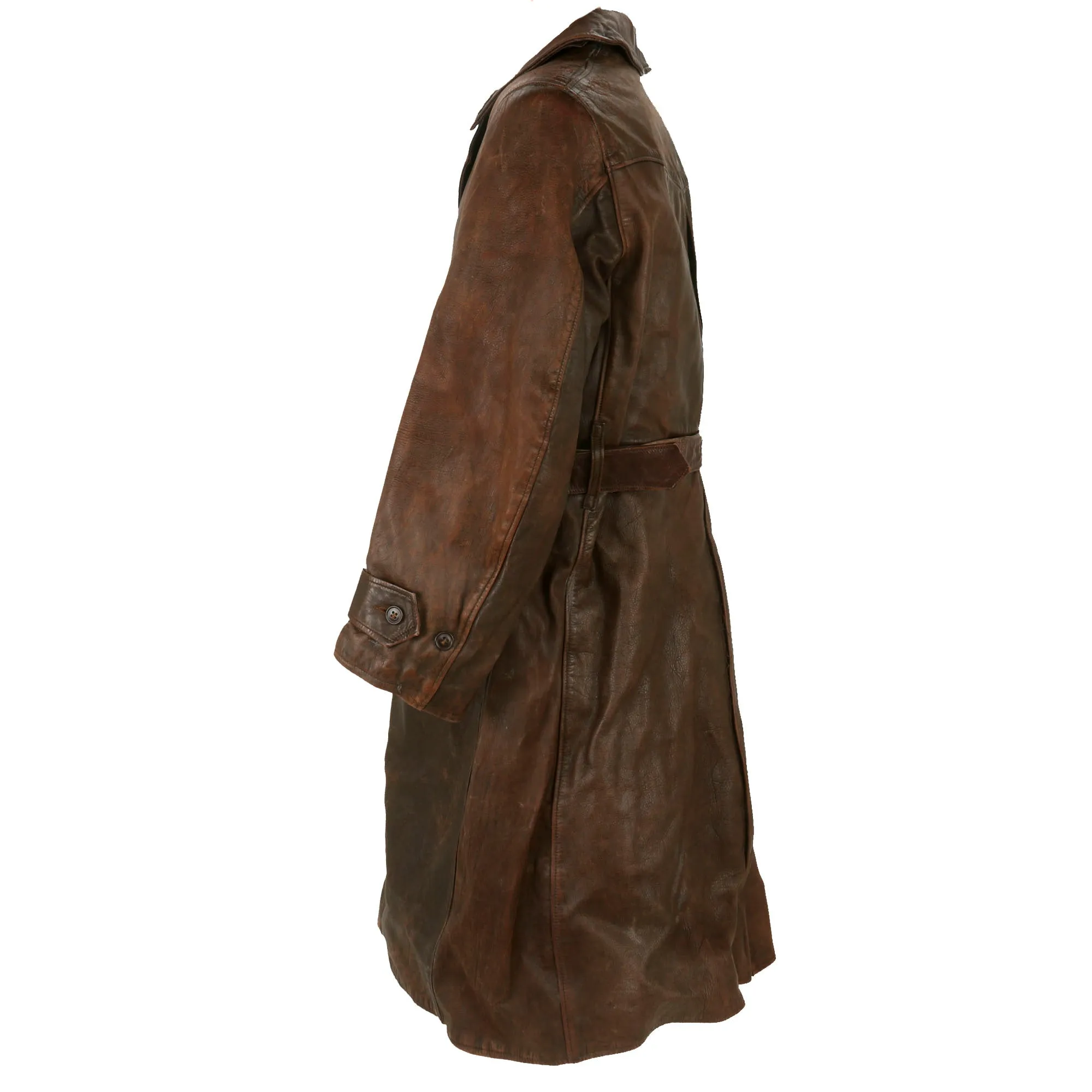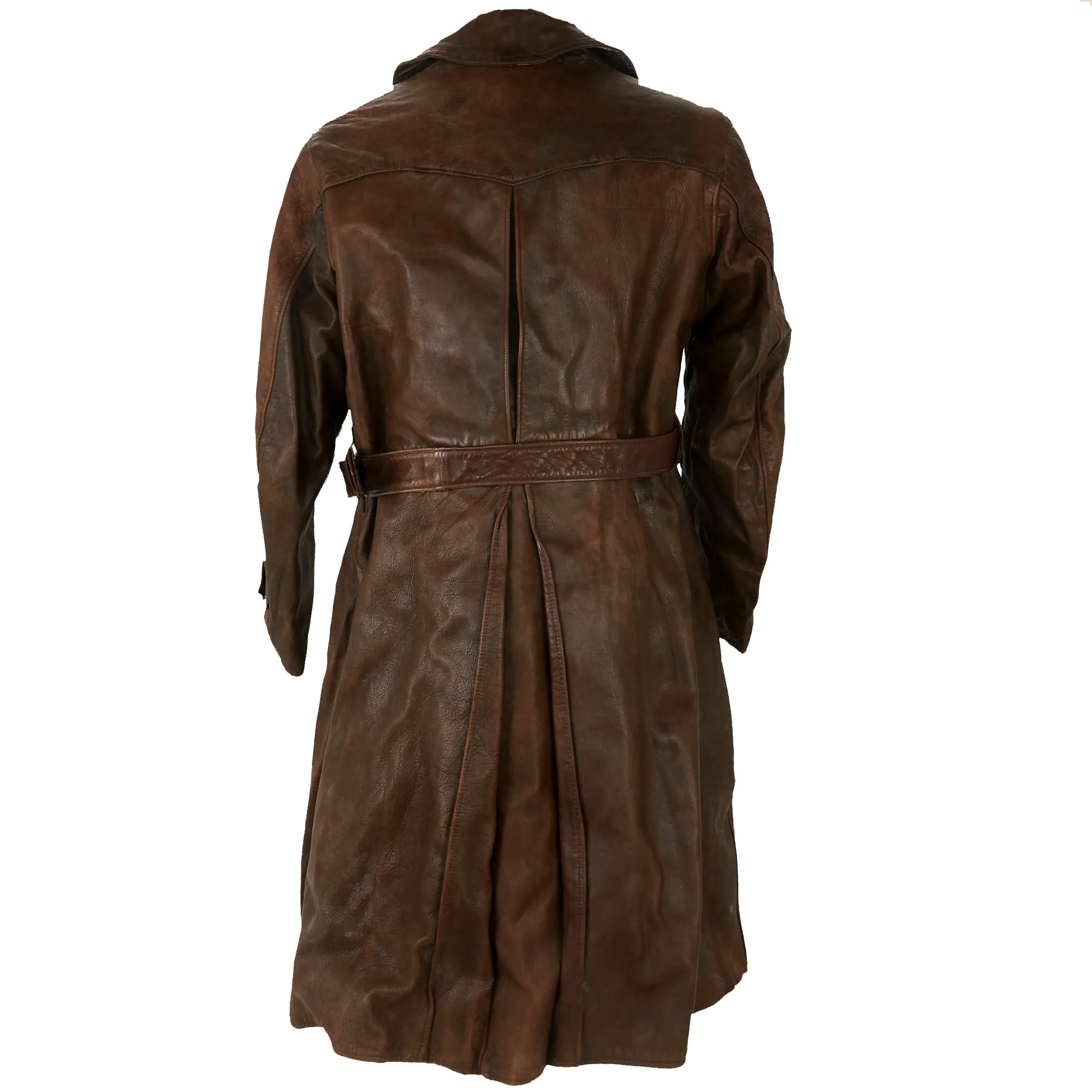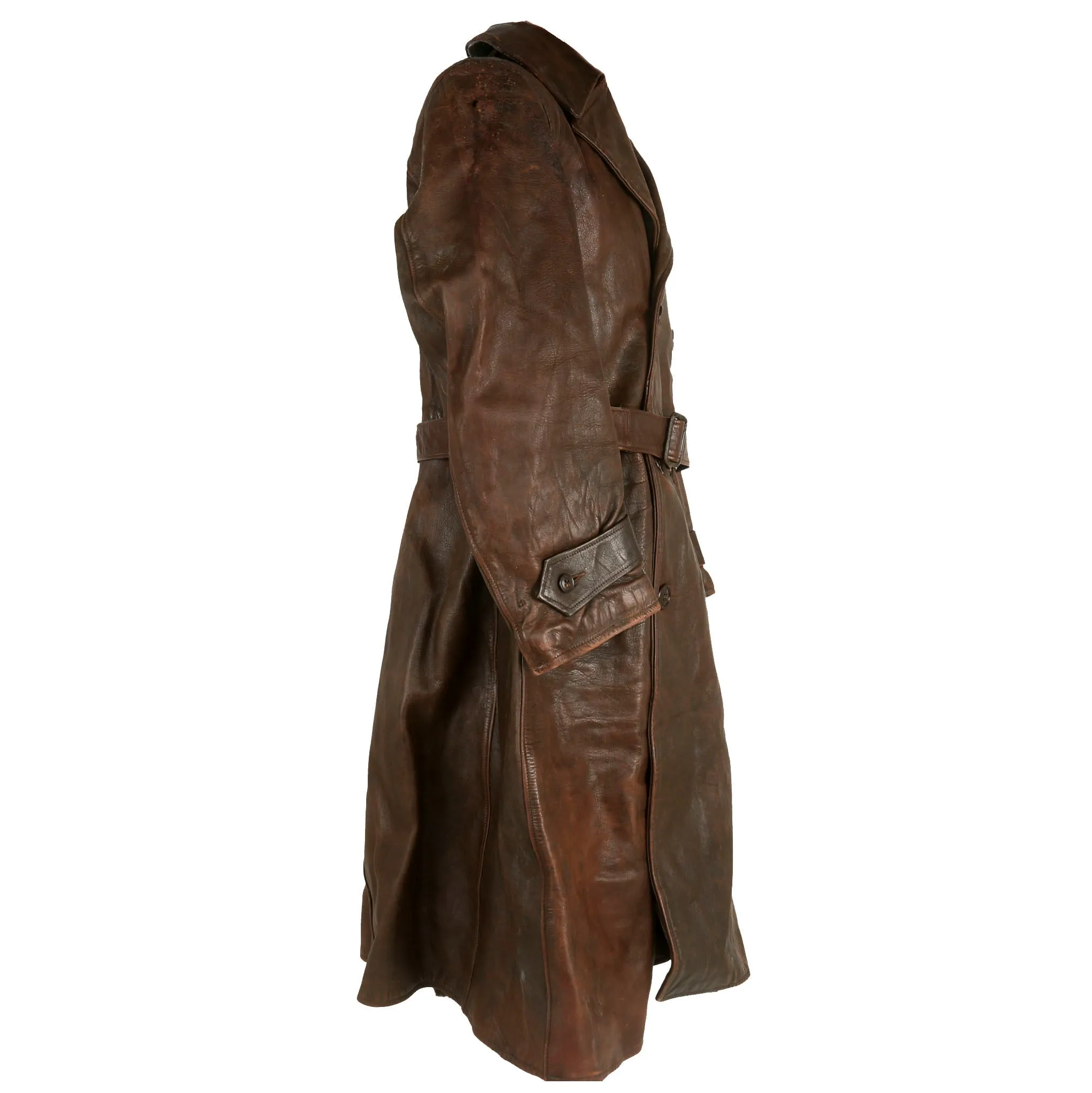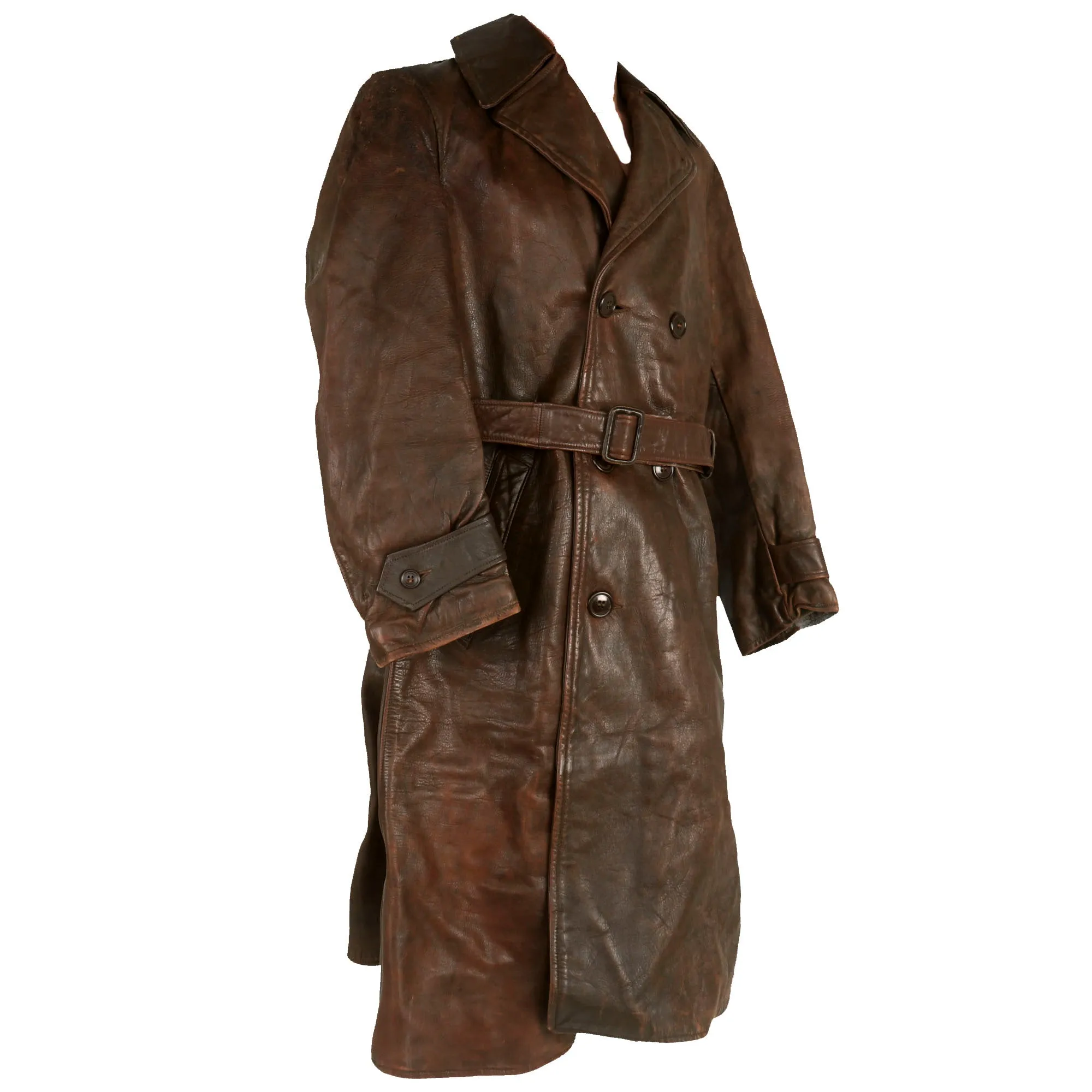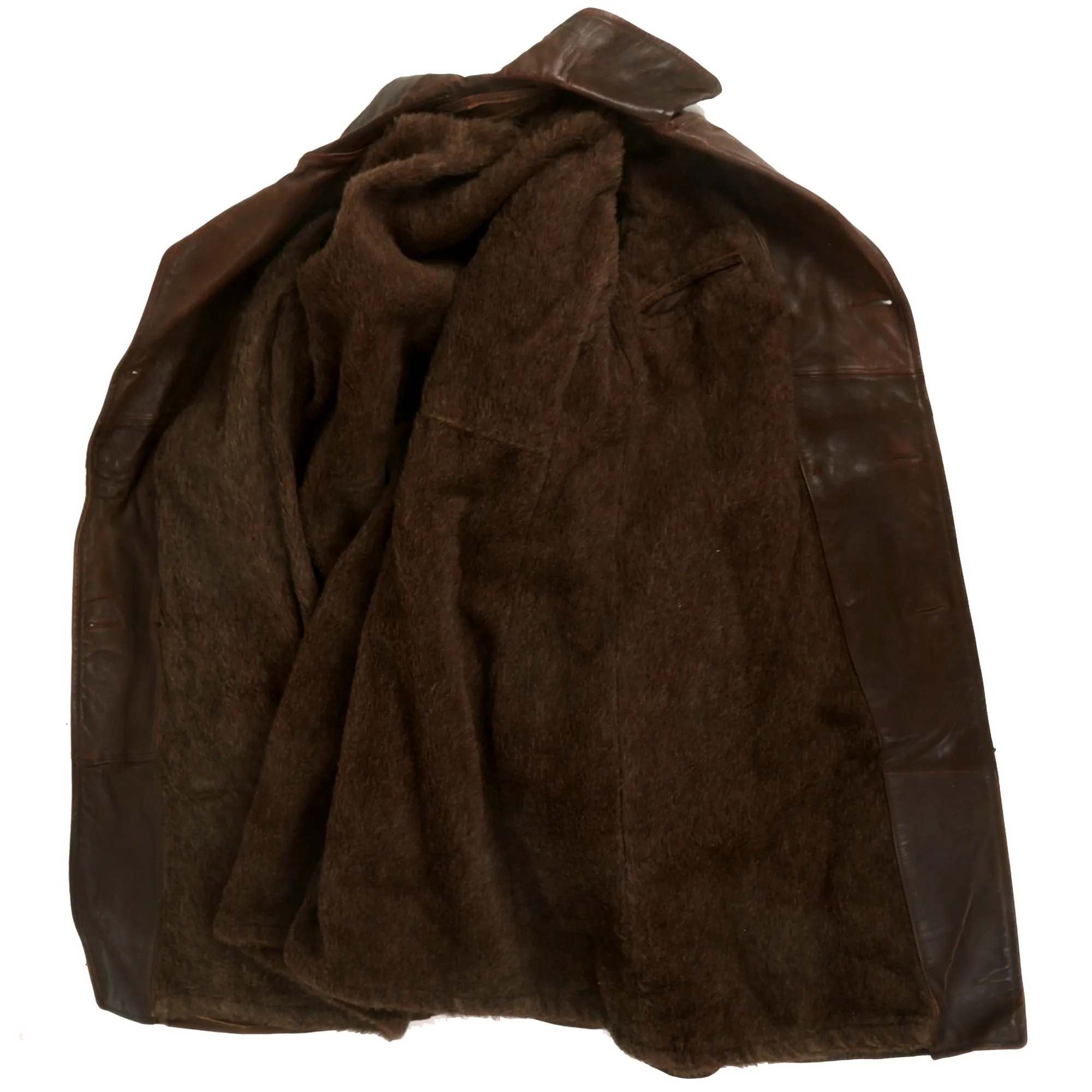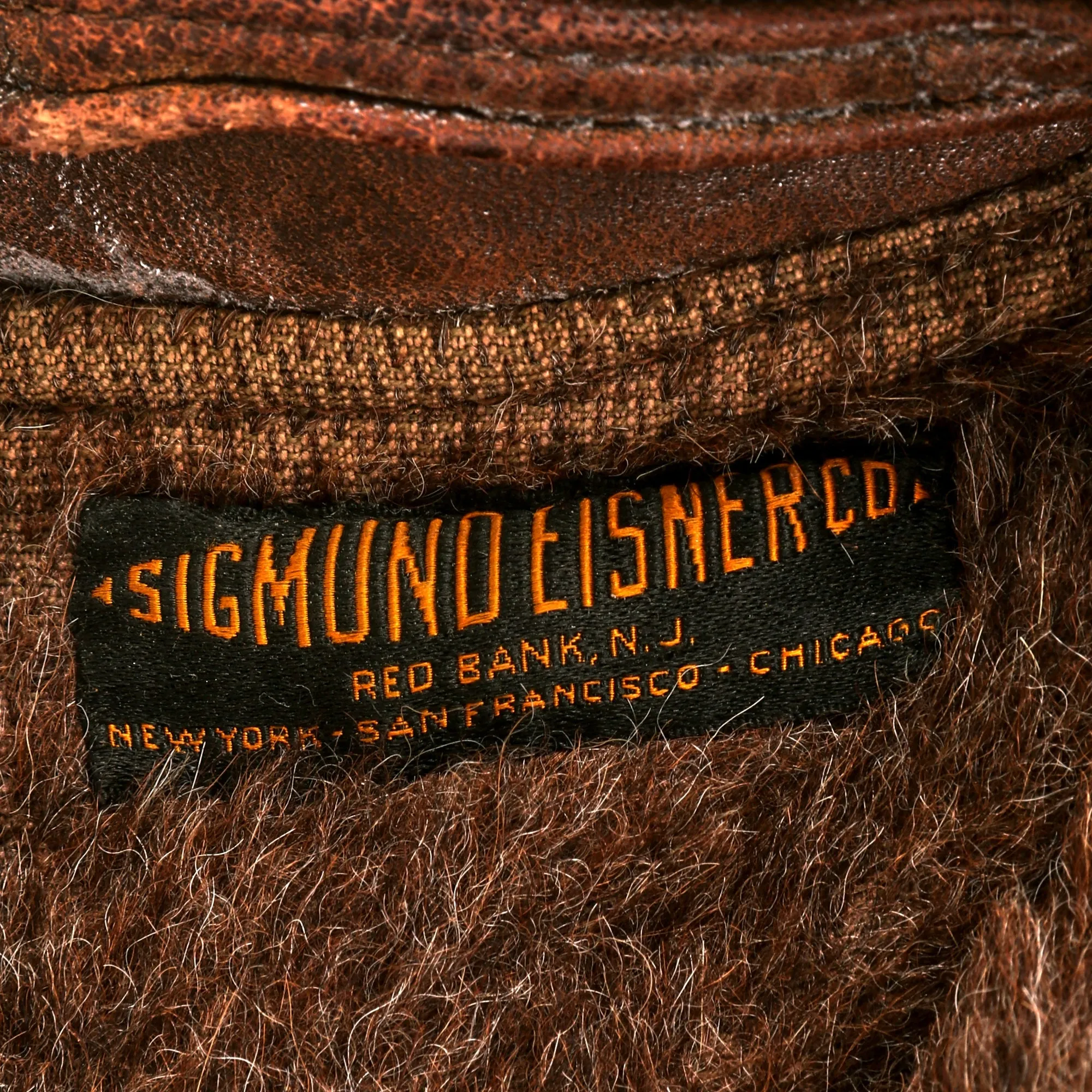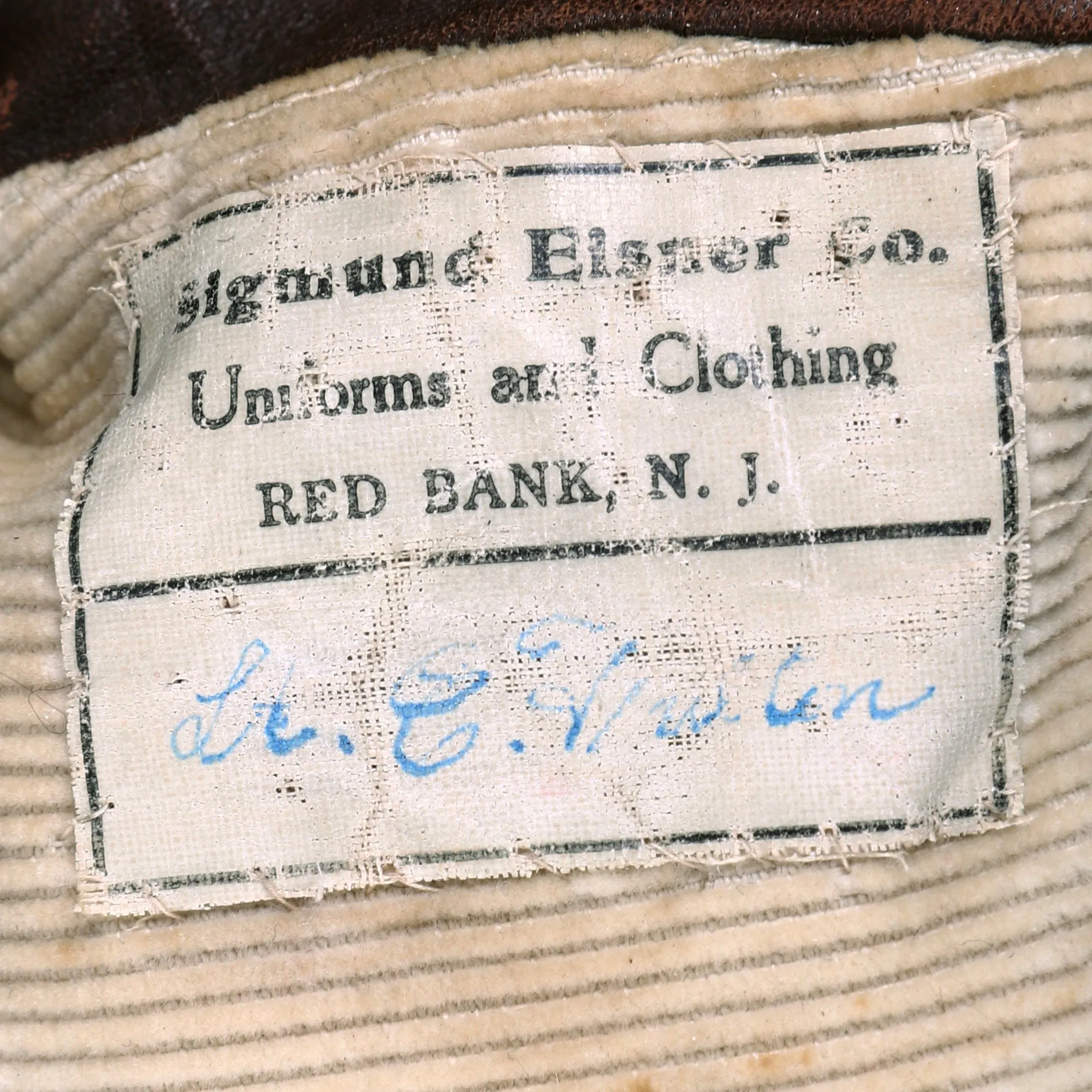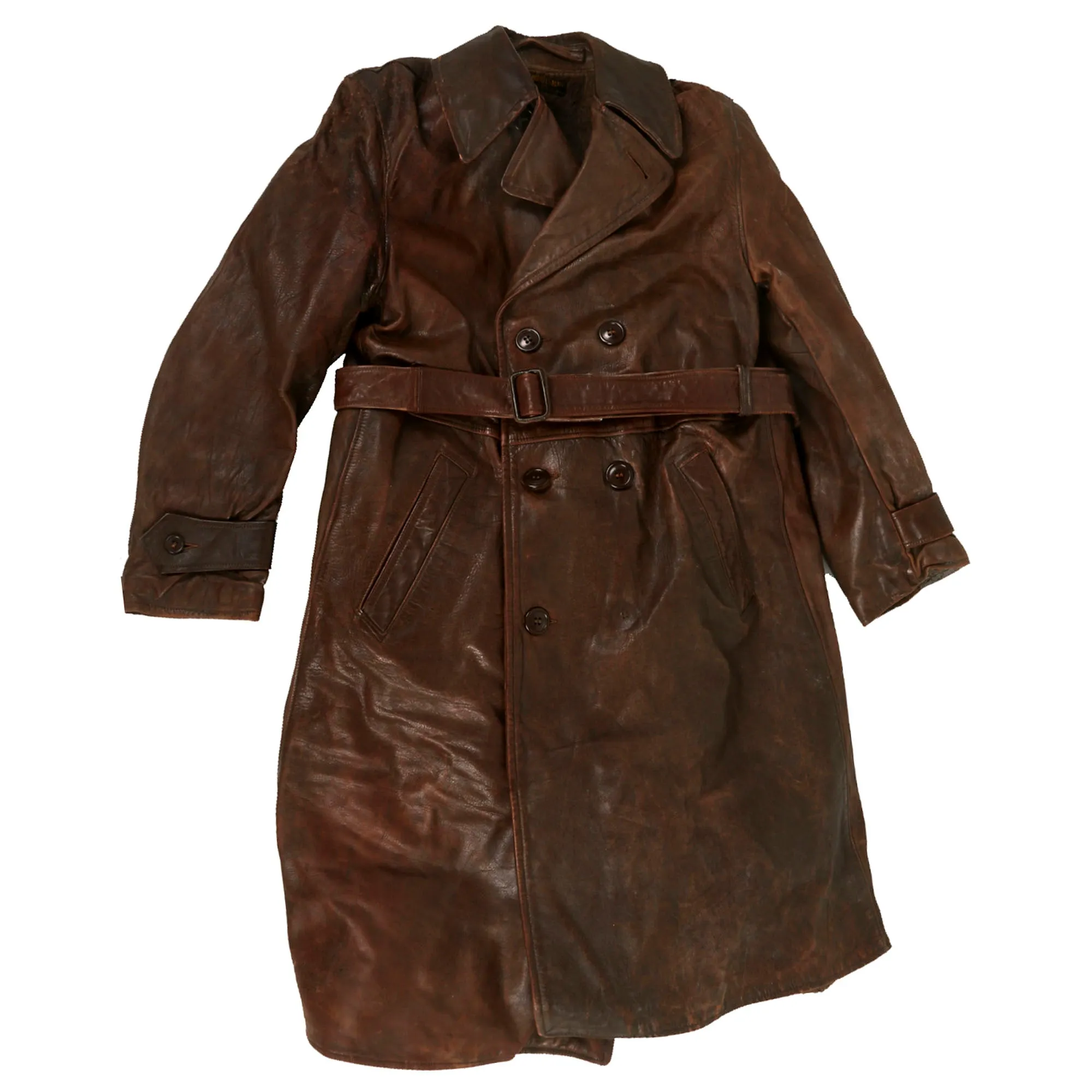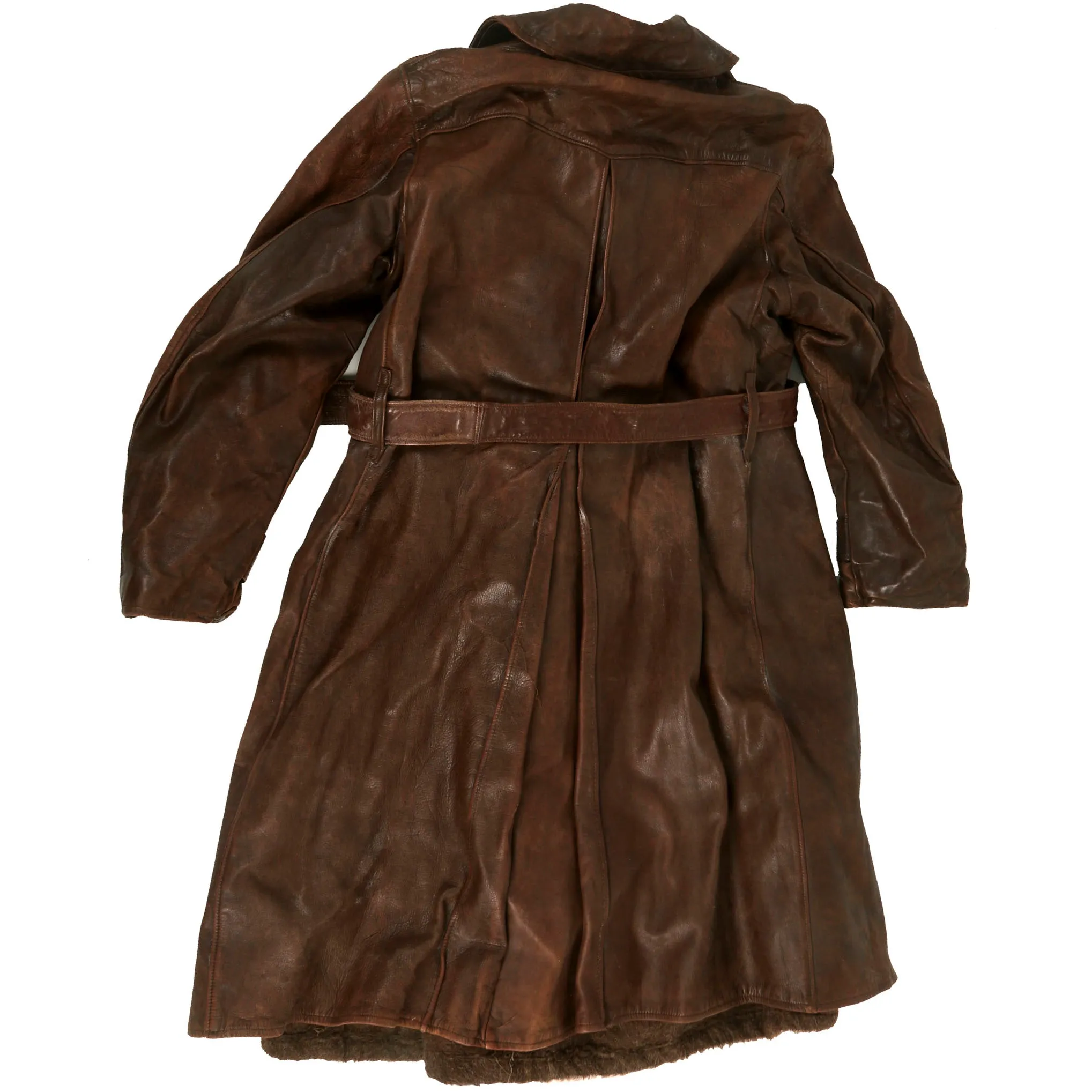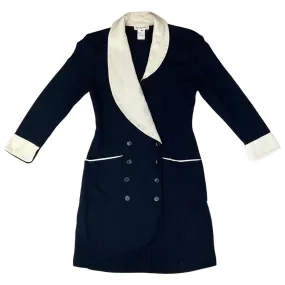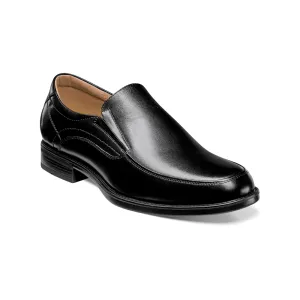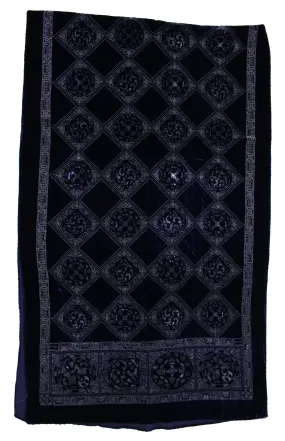Original Items: Only One Group Available. This is a fantastic and rather rare WWI uniform grouping! This uniform was once worn by Pilot 2nd Lieutenant Enoch S. Thompson of the 182nd Aero Squadron, 1st Army Air Service after transferring from the Medical Reserve Corps. Enoch Spencer Fulton was born on October 7th, 1885, in Camp, Louisiana. On February 11th, 1911, he married Eve H. Jacks in McGhee, Arkansas. He was first commissioned as a Lieutenant in the Army on December 31st, 1917. He was already at this time a medical doctor, giving him an easy path to a commission overseas. He was attached to the Aviation Section, Signal Corps, later being assigned to the 182nd Aero Squadron as its medical detachment officer, serving overseas from May 19th, 1918 to March 14th, 1919. After returning stateside he returned to his service as a medical doctor. Fulton was at one time the Chief Surgeon of the Alexandria Veterans Hospital and prior to that ran his own hospital in New Iberia, Louisiana. Fulton passed away on July 18th, 1966, in Little Rock, Arkansas.
The Aviation Section, Signal Corps, was the aerial warfare service of the United States from 1914 to 1918, and a direct statutory ancestor of the United States Air Force. It absorbed and replaced the Aeronautical Division, Signal Corps, and conducted the activities of Army aviation until its statutory responsibilities were suspended by President Woodrow Wilson in 1918. The Aviation Section organized the first squadrons of the aviation arm and conducted the first military operations by United States aviation on foreign soil.
The Items In This Grouping:
- Pilot Uniform With Breeches: This is a fantastic, moderately worn uniform set that is named to Lt. Fulton on the trousers. The uniform and insignia is entirely French made with a great set of bullion embroidered aviation wings on the left chest. The 1st Army “A” patch is in fantastic condition with a great red/blue/white roundel signifying Air Service. There is moderate mothing scattered throughout the uniform but nothing that subtracts from the beauty of it. The insignia does appear to be period applied and really adds to the display.
- Leather Flight Jacket: The flight coat is a heavy leather shell with fur lining by the Sigmund Eisner Co of Red Bank, New Jersey. In 1917, the US Army Aviation Clothing Board created “flight jackets” for WWI pilots. These special jackets were necessary because the cockpits in WWI fighter planes were open-air and uninsulated. To protect from the bitter cold conditions, the original flight jackets were crafted of horse leather or sealskin and lined with fur. The jacket is in solid condition with signs of moderate wear with loose stitching and very minor detach from the lining.
- Leather Flying Helmet With Goggles: This is a fantastic example of a solid leather flying helmet, complete with original leather chinstrap. Typical allied construction of the period with all snaps and buckles present. The leather is soft and supple, truly amazing condition for over 100 years of age. There is no major damage to the helmet but unfortunately the stitching in the leather on top has come undone slightly. The goggles are very worn with partially clear glass lenses.
- M-1910 Peaked Visor: A wonderful, worn example that is named on the sweatband to Fulton. The cap is a little deformed with rather extensive stitching loss on the interior. The outside of the visor has minor staining with moth nips but no tearing present. The thin decorative chinstrap is complete and still affixed to the sides with general service buttons.
- Decorated Dutch Sabot Clog: A sabot is a clog from France or surrounding countries such as The Netherlands, Belgium or Italy. Sabots are either whole-foot clogs or a heavy leather shoe with a wooden sole.
Sabots were considered a work shoe associated with the lower classes in the 16th to 19th centuries. During this period, the years of the Industrial Revolution, the word sabotage gained currency. An alleged etymology describes the actions of disgruntled workers who willfully damaged workplace machinery by throwing their sabots into the works. In truth, sabotage is derived from the noise and clumsiness associated with the wooden sabot shoe.
This one was decorated with Fulton’s name as well as another officer’s name that appears to be Lt. Jack with an unclear last name.
- 12” x 7” 46 Star American Flag: A lovely period flag that has writing stating that Fulton carried it over France. Great condition with only one small tear.
- Fulton’s Red Cross Bag
- Fulton’s Seabag
- Sewing Kit With Contents
- Hygiene Kit With Contents
- American WWI Victory Medal With France Clasp
- 1914–1918 Inter-Allied Victory Medal: The 1914–1918 Inter-Allied Victory medal was a French commemorative medal established on 20 July 1922. It was the French version of a common allied campaign medal where each allied nation issued a Victory Medal to their own nationals, all issues having certain common features, including the same ribbon, a winged figure of victory on the obverse and a similar inscription on the reverse, the French version reading "LA GRANDE GVERRE POUR LA CIVILISATION 1914-1918".
This is such a wonderful grouping, perfect for the early aviation collector. Comes more than ready for further research and display.

